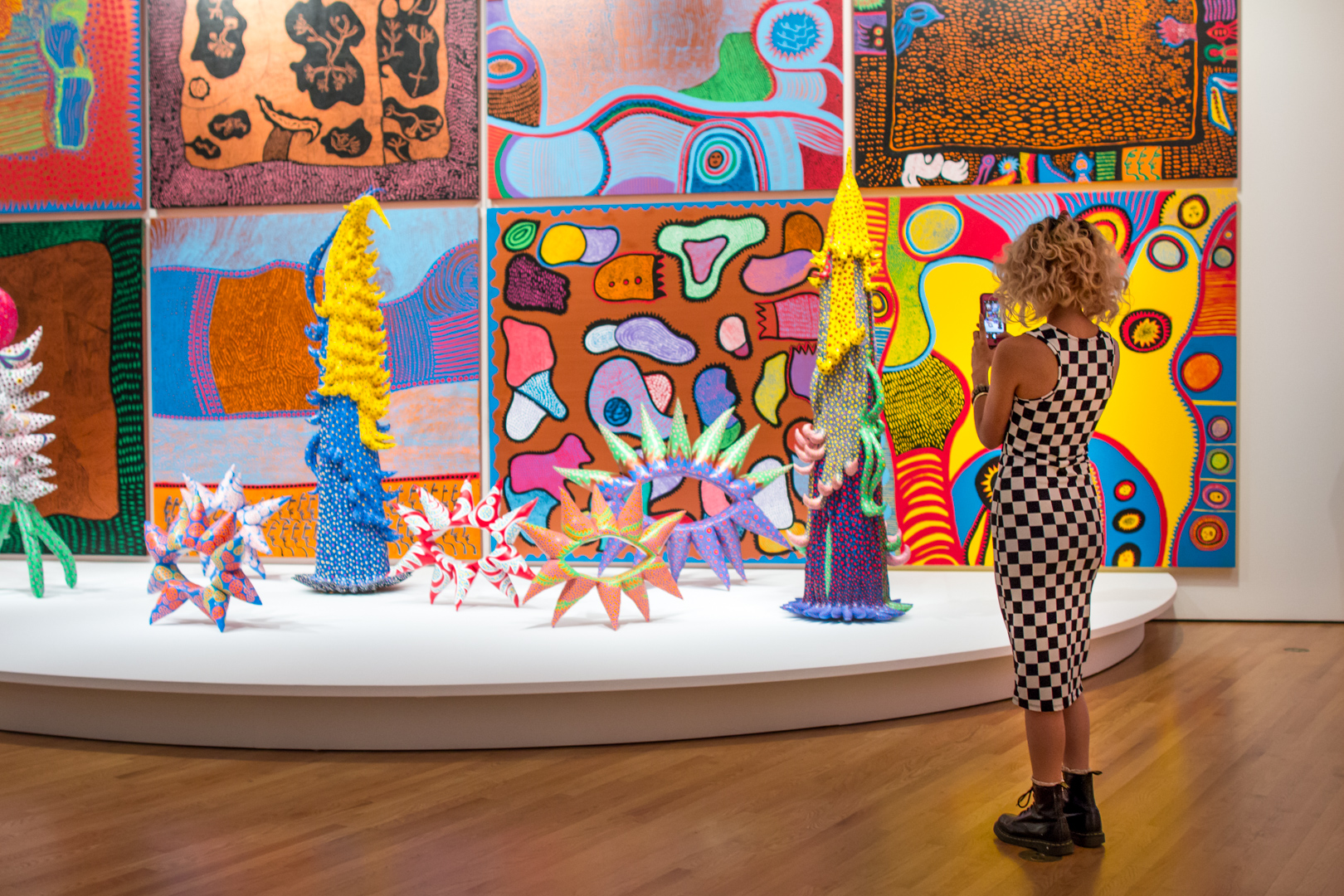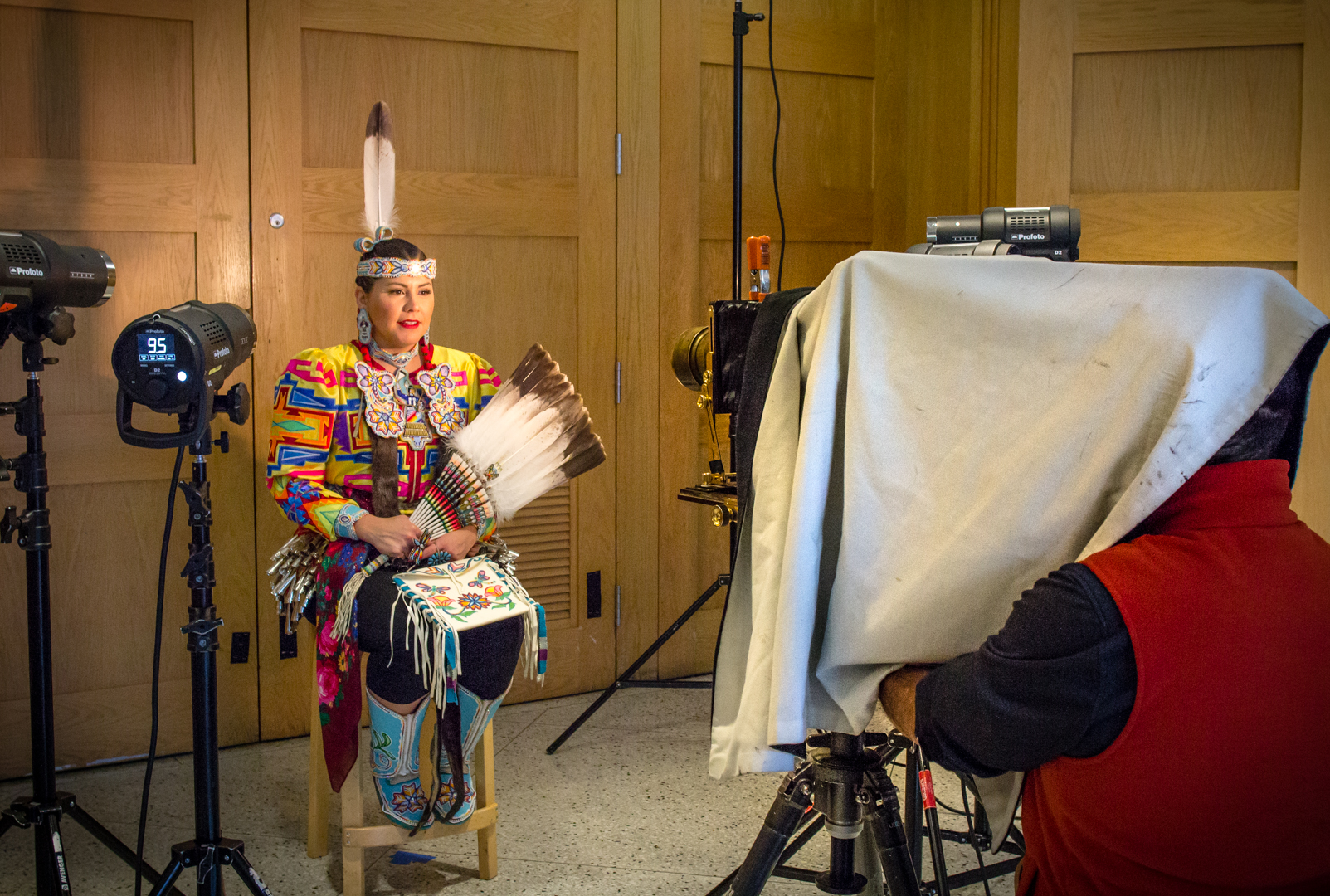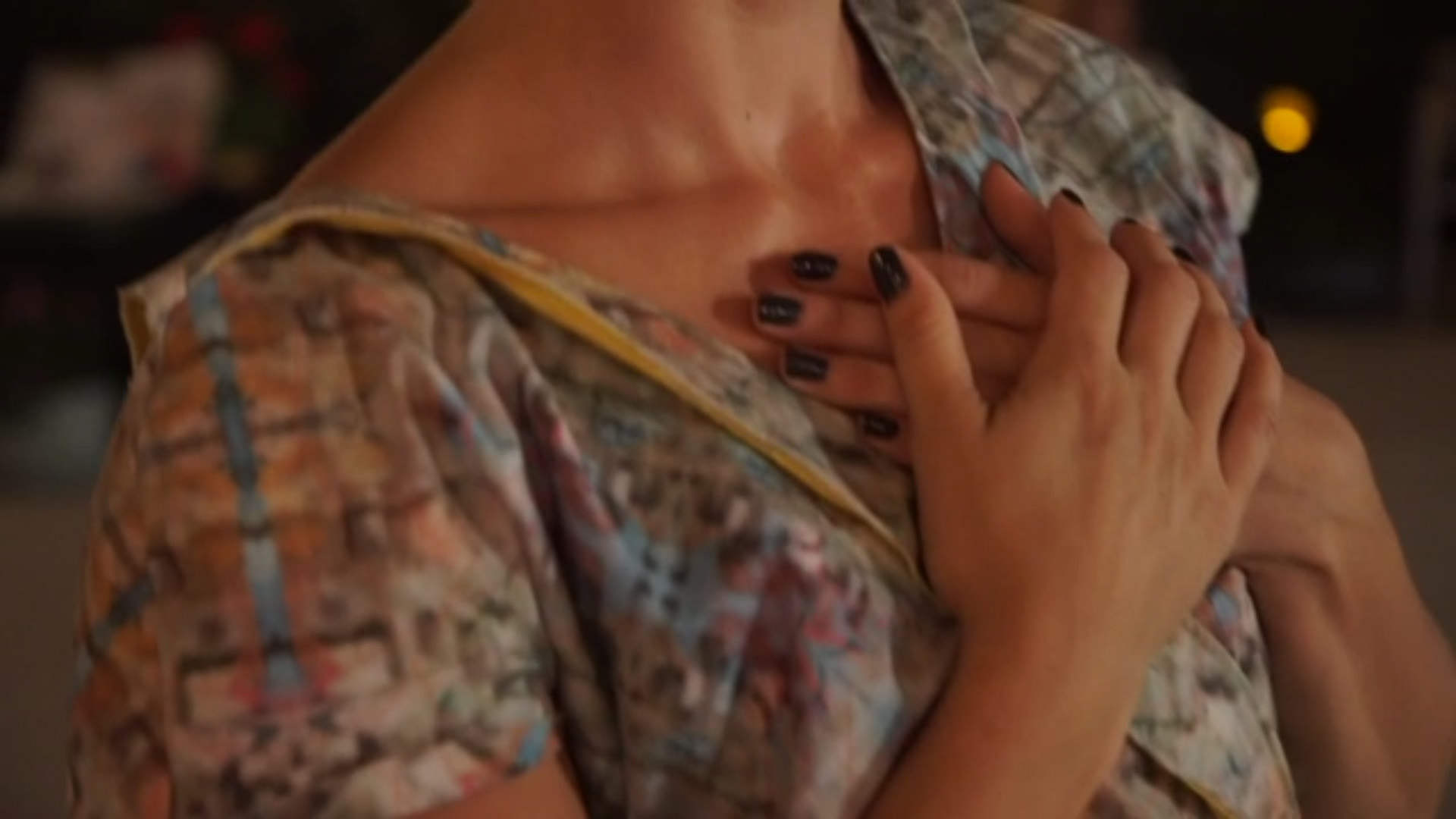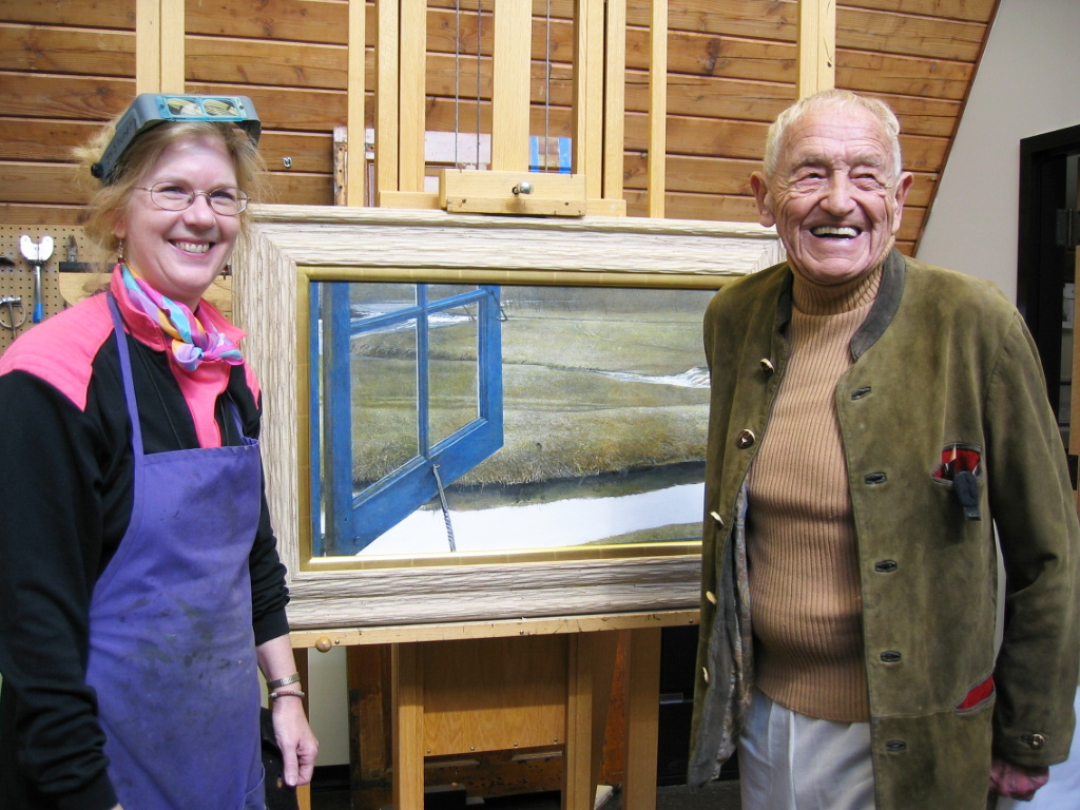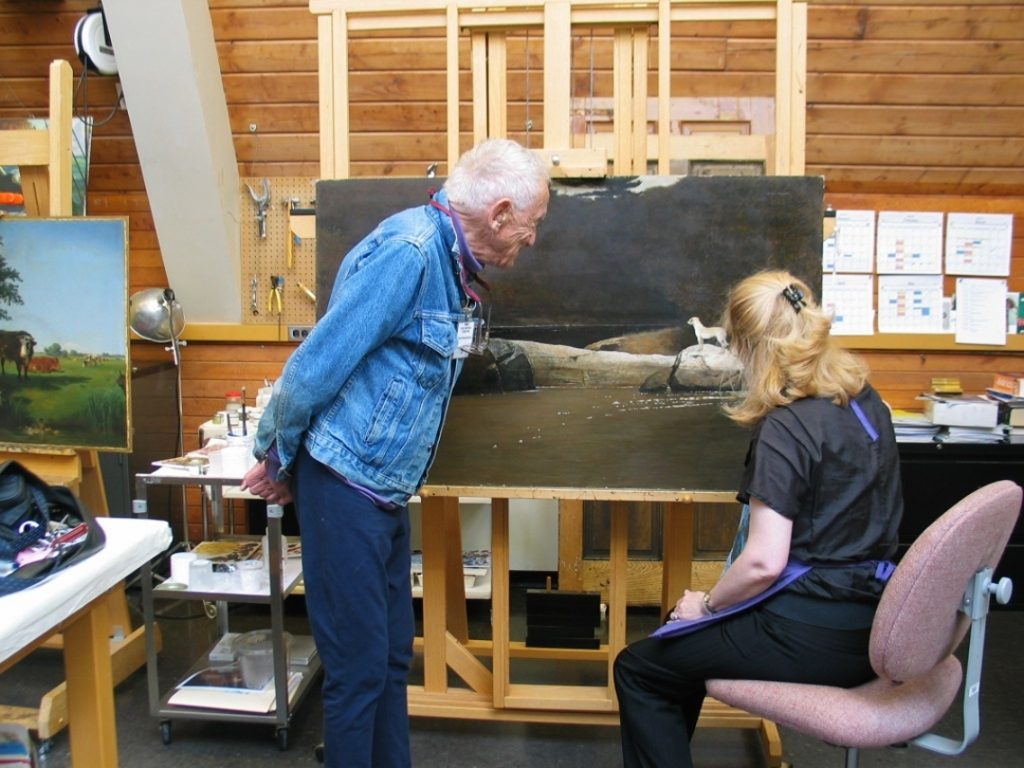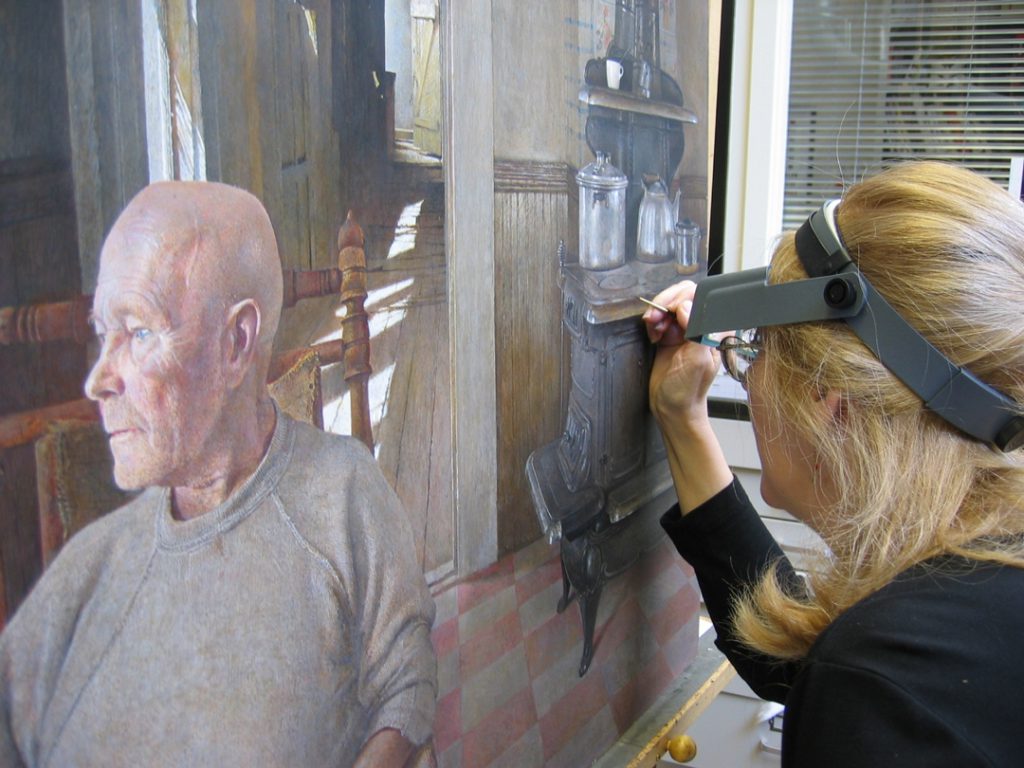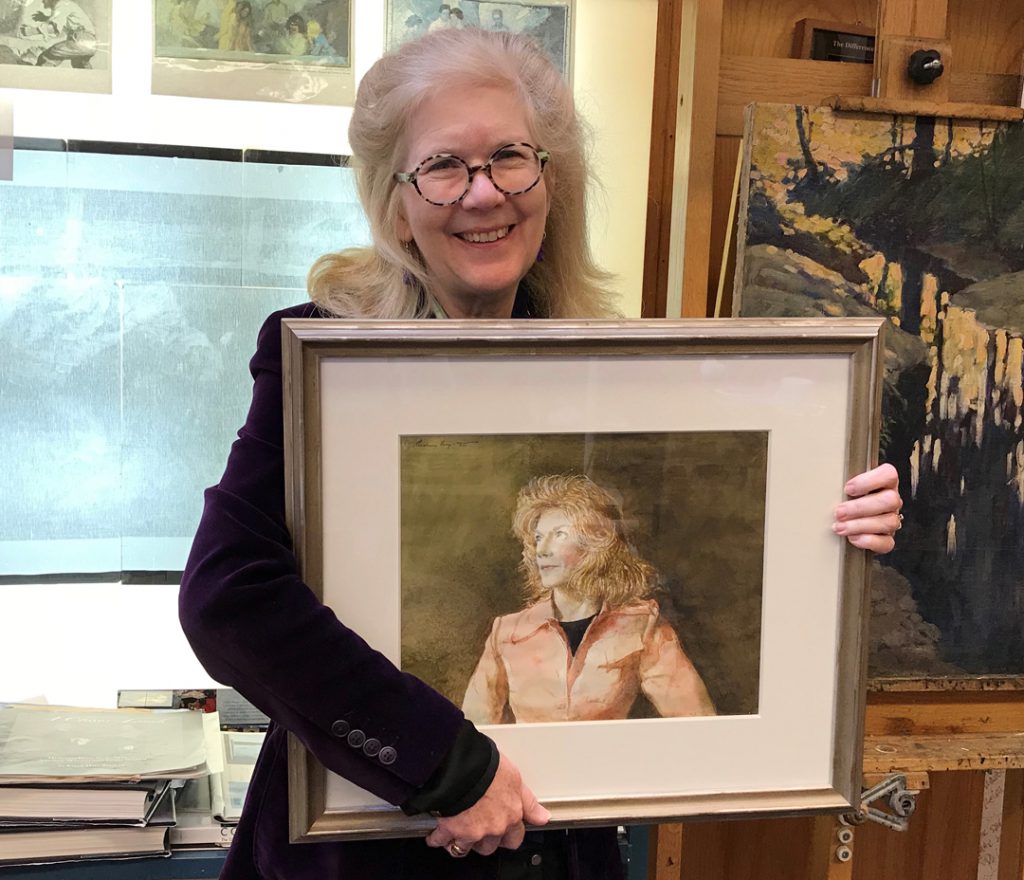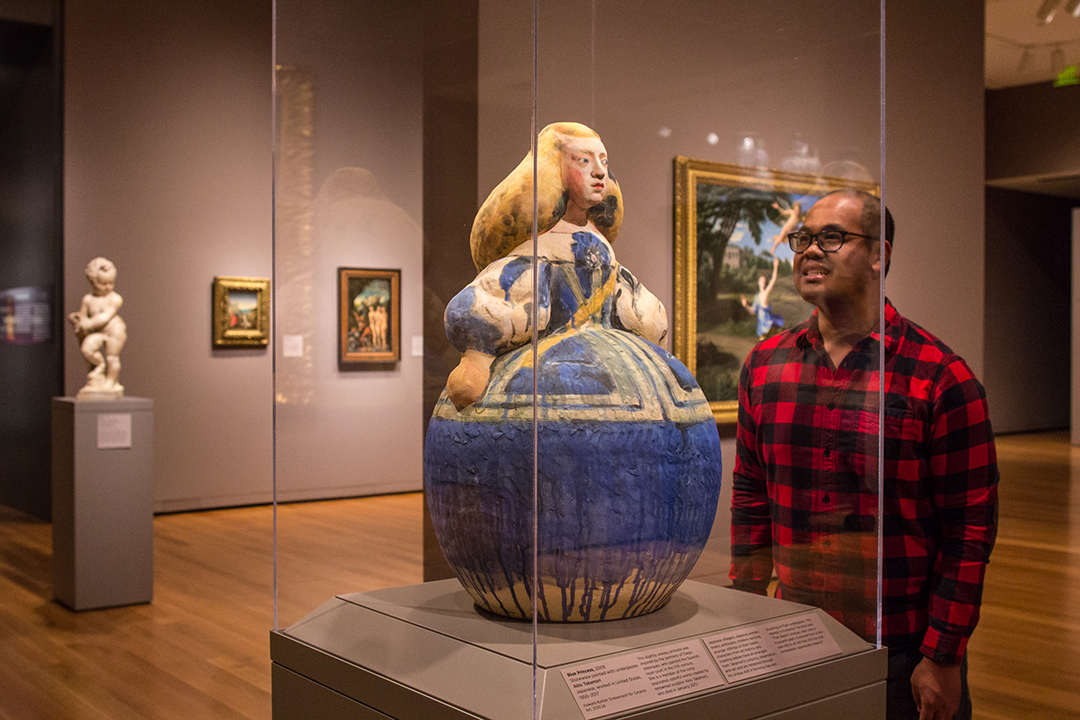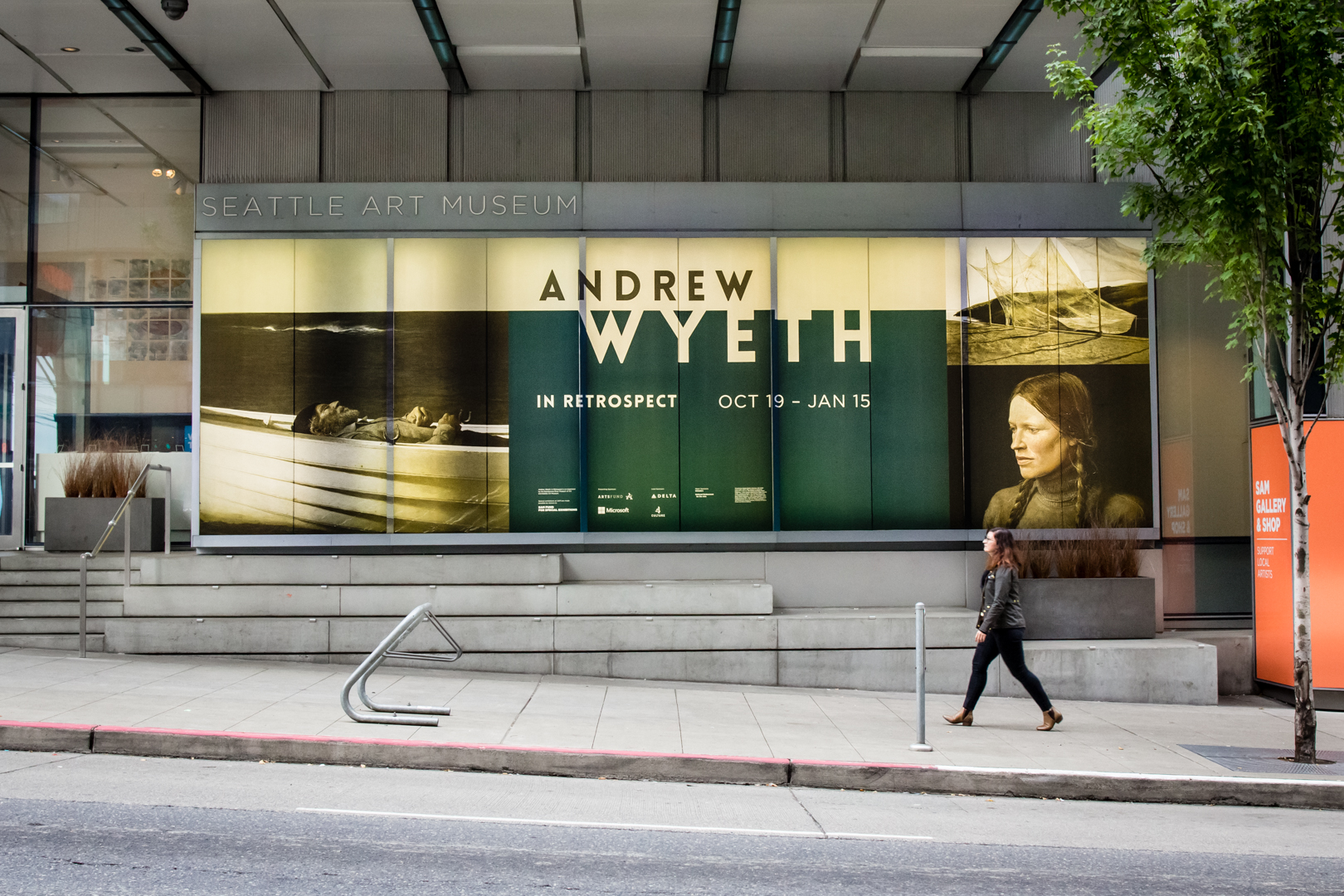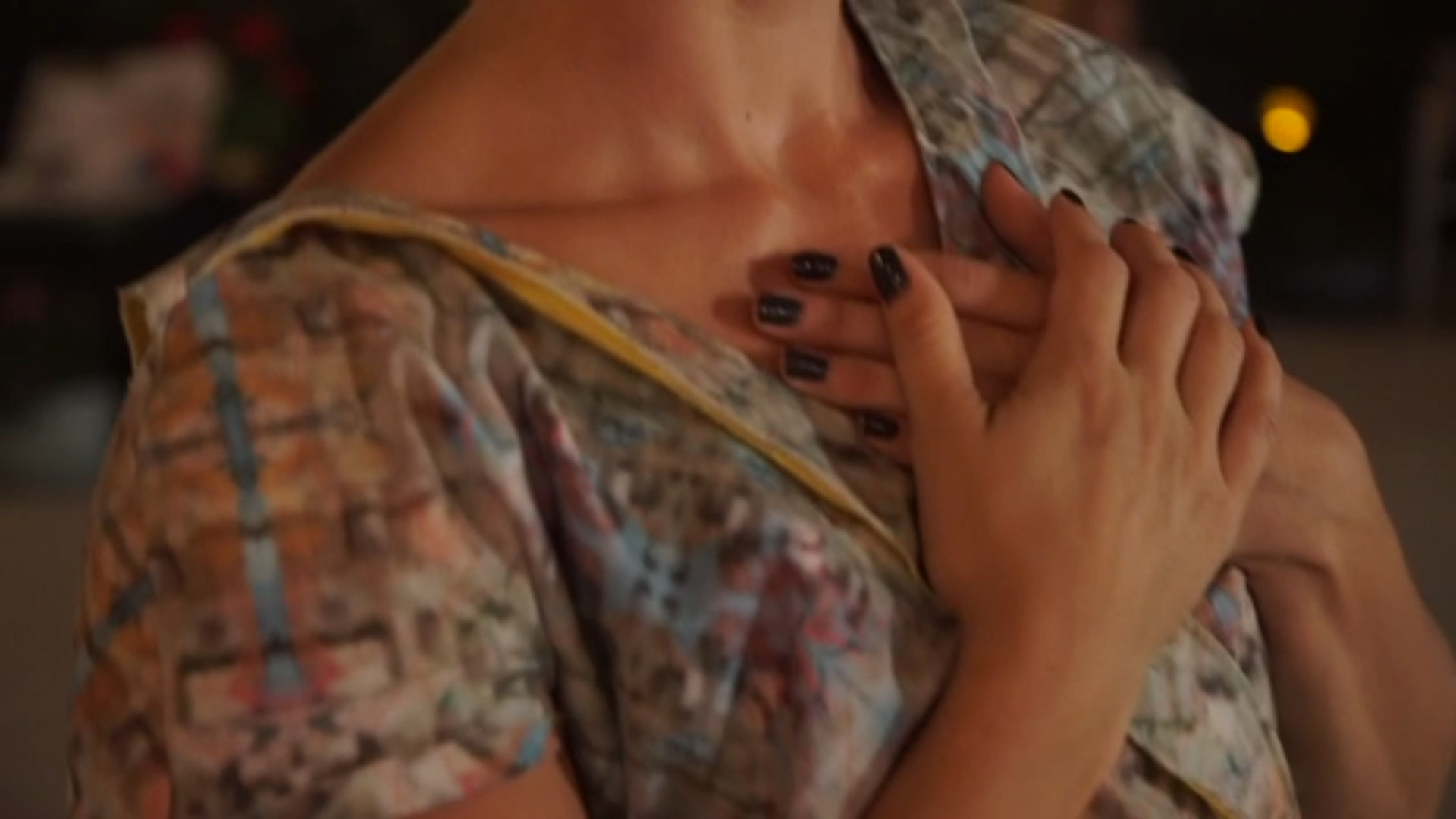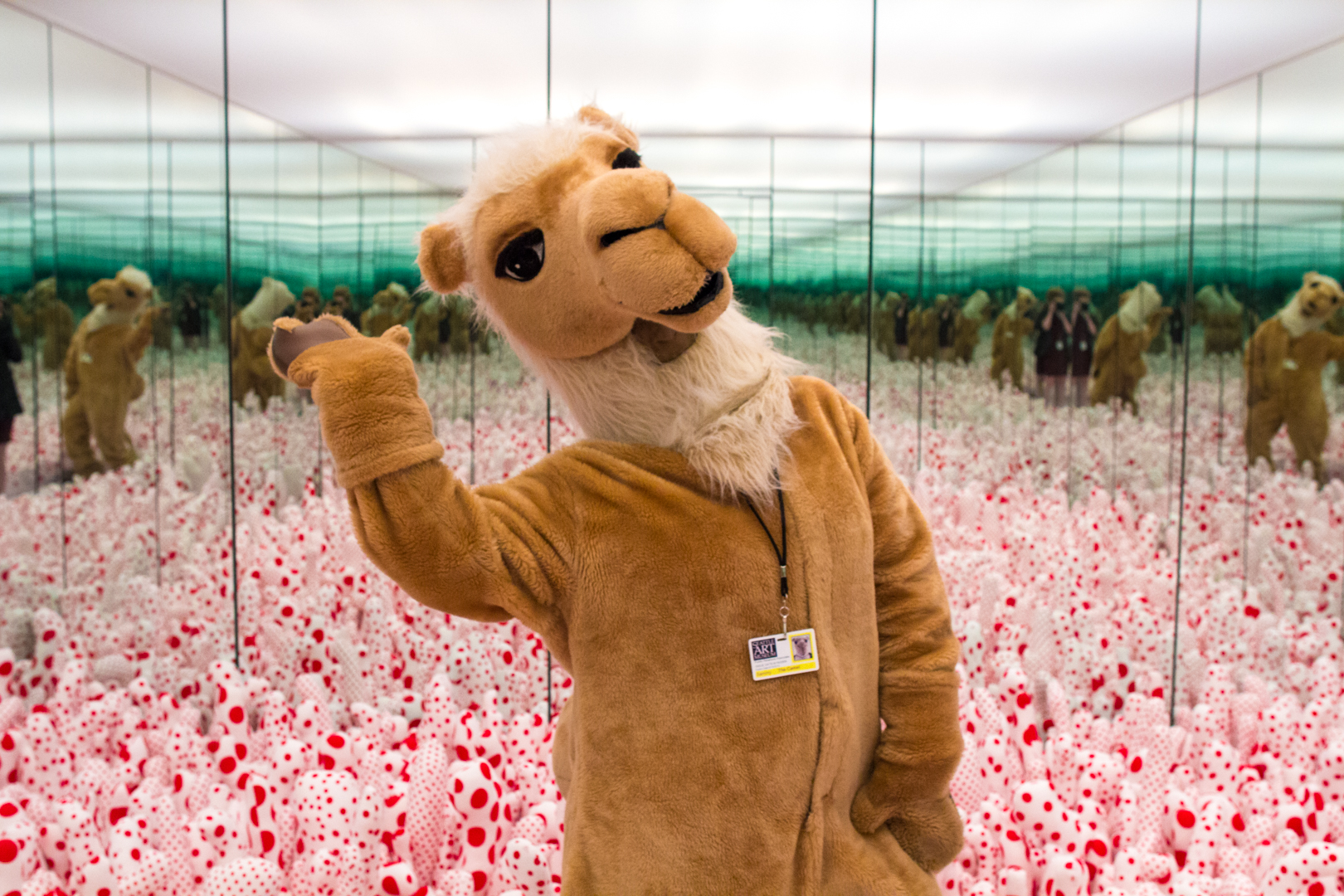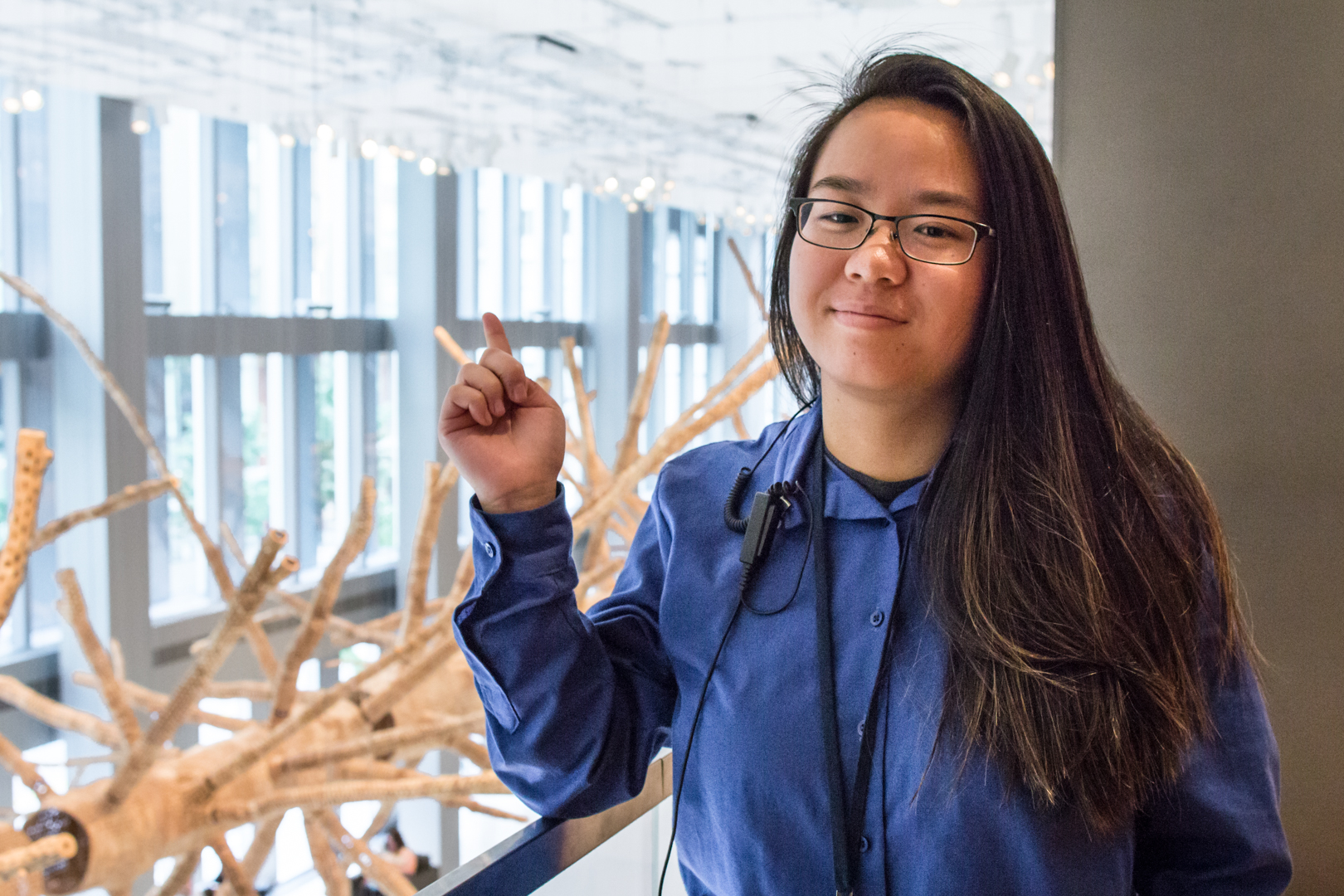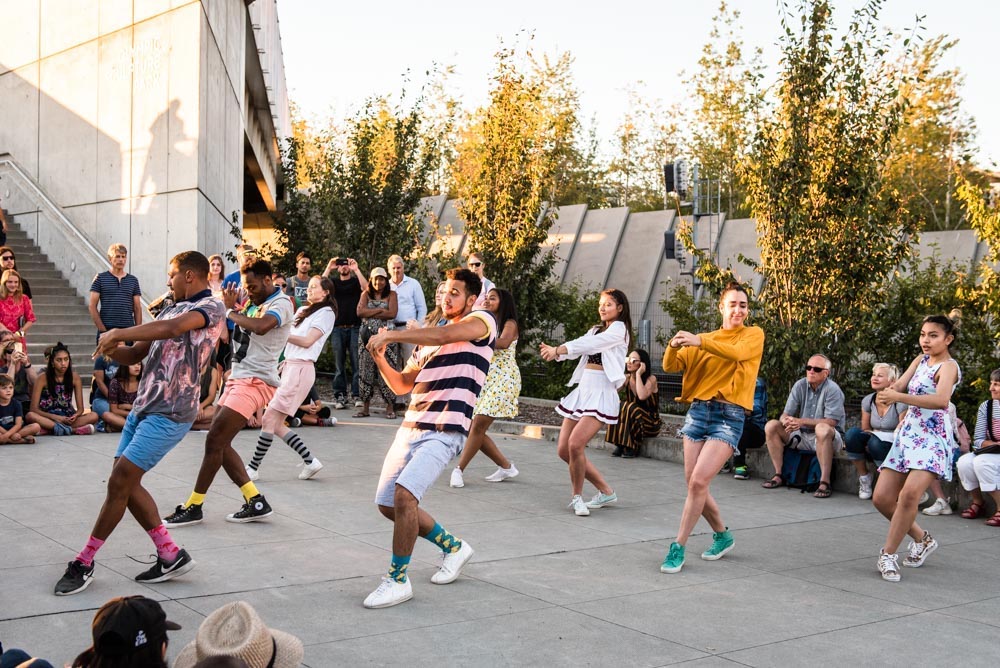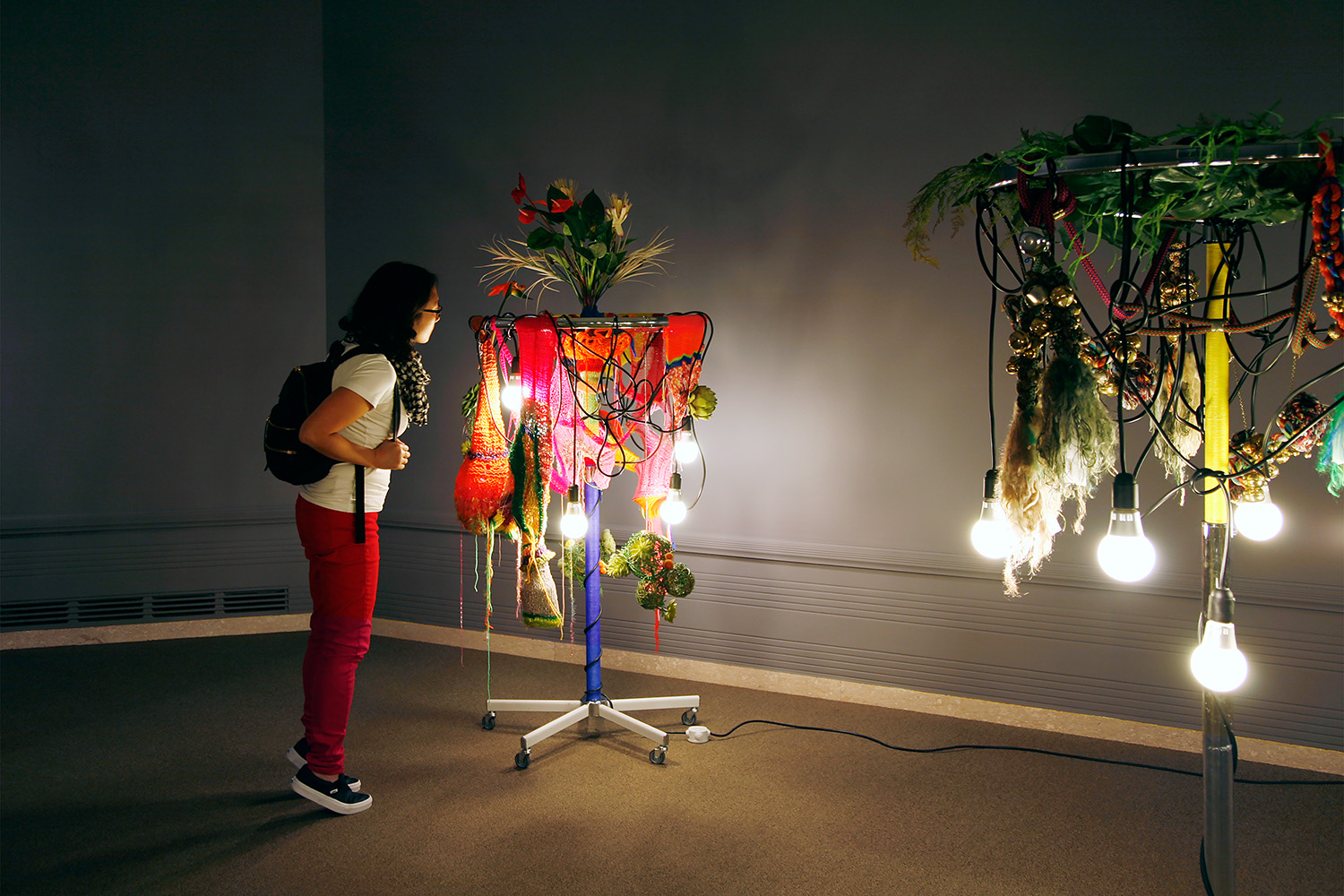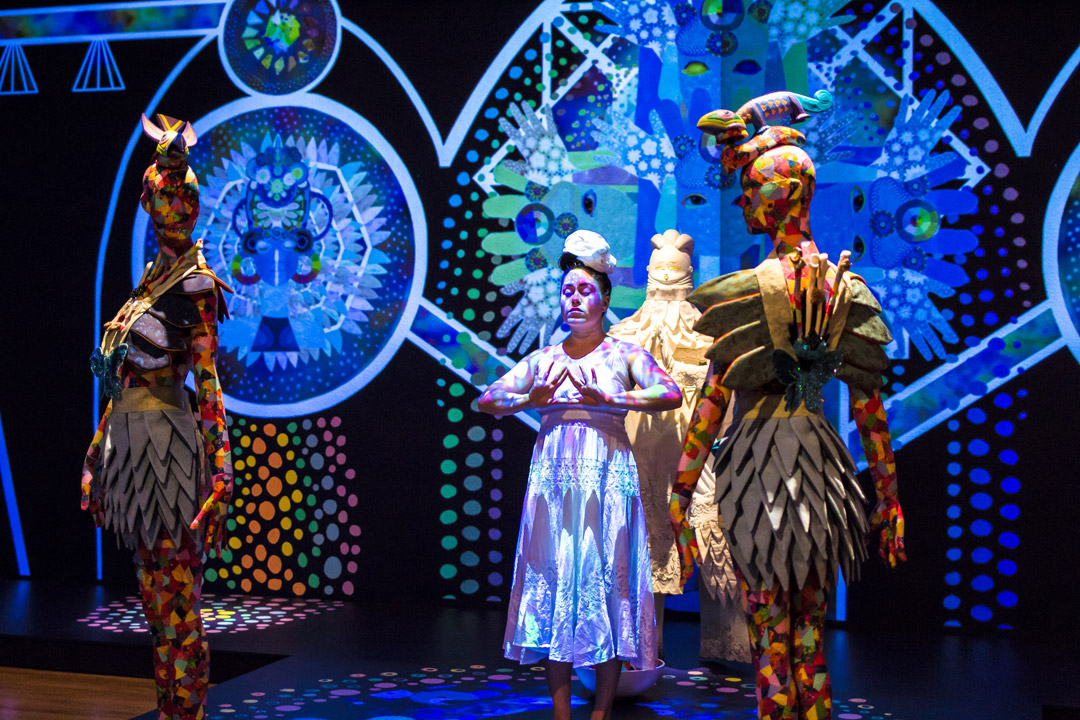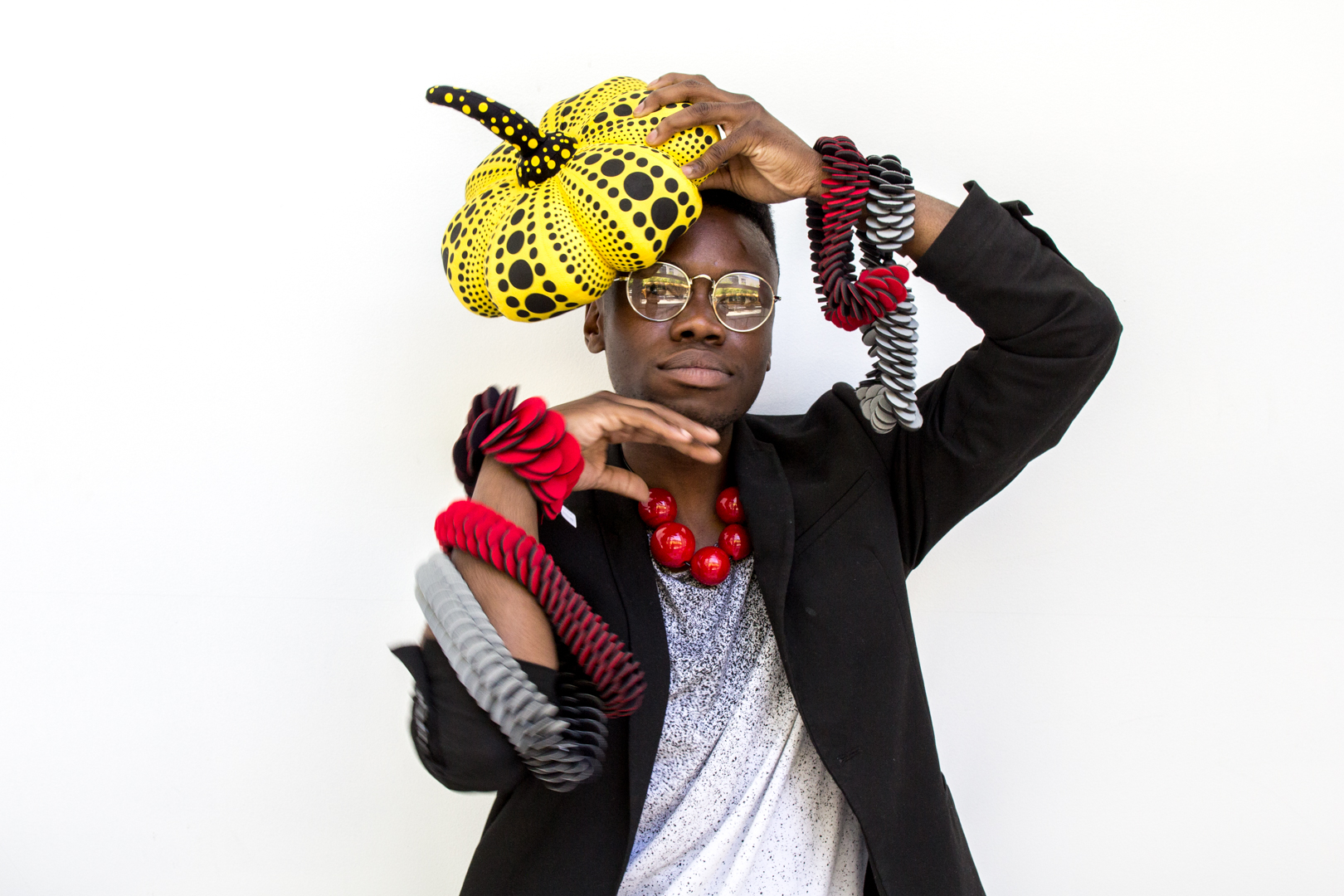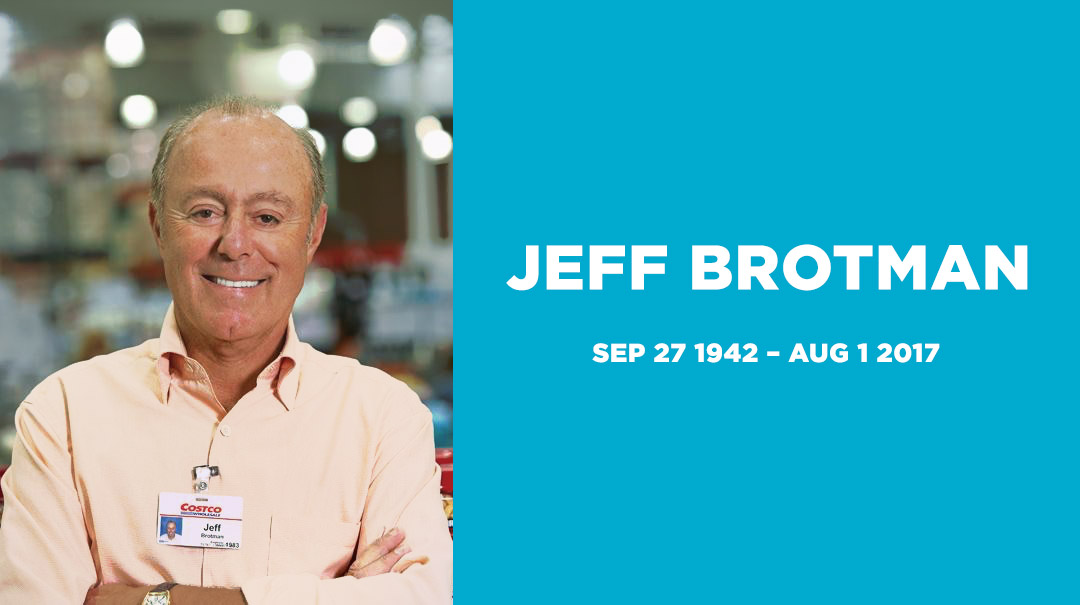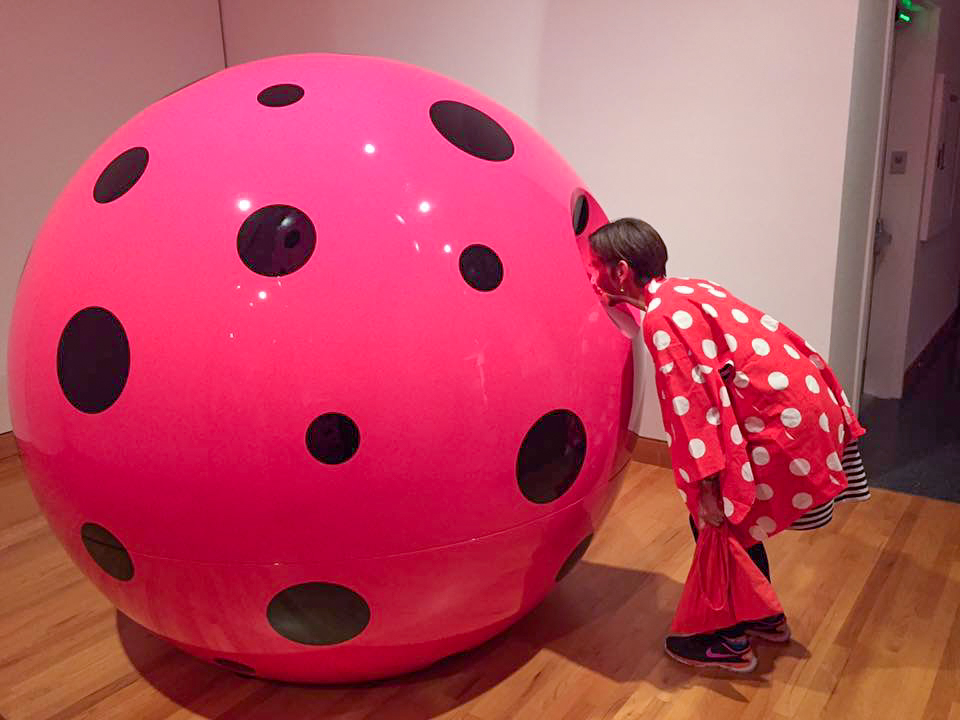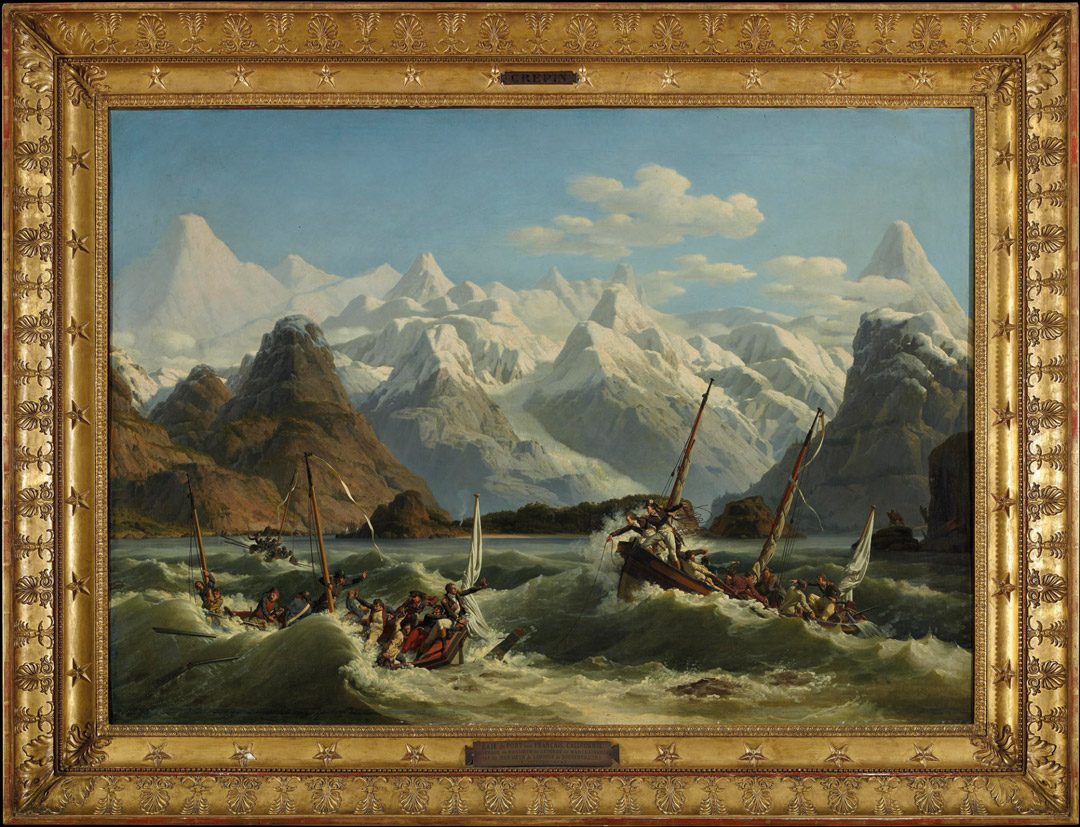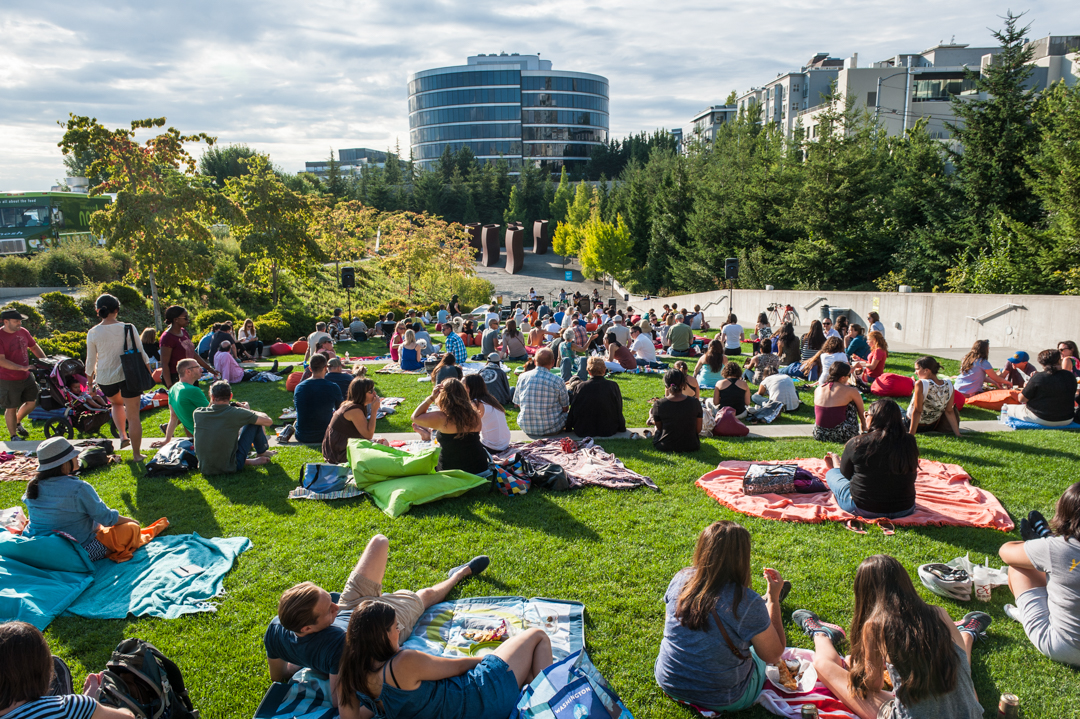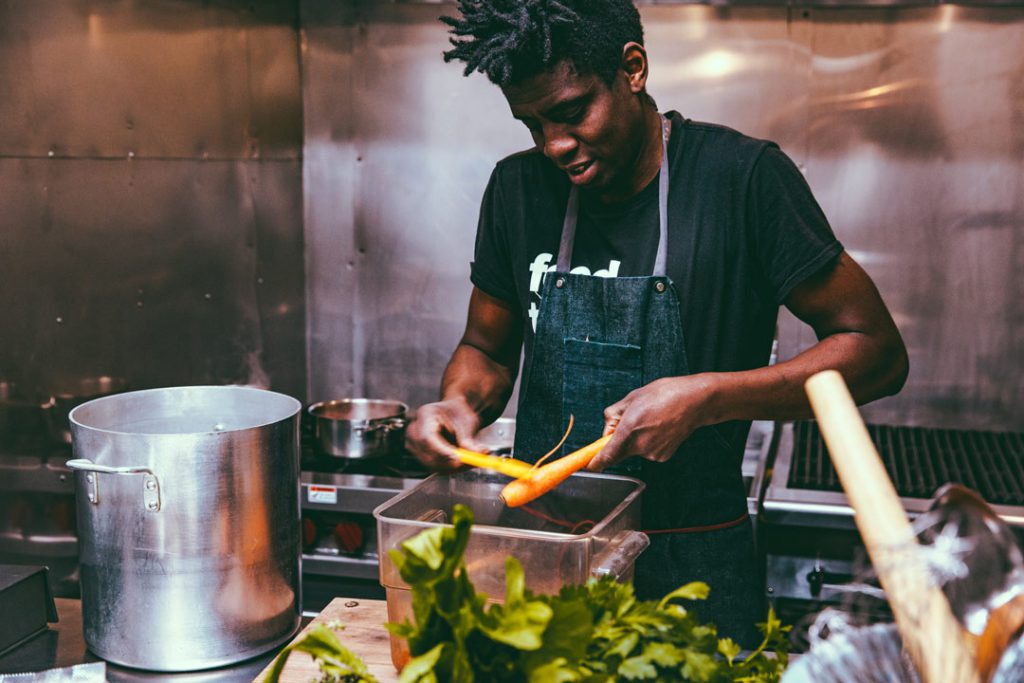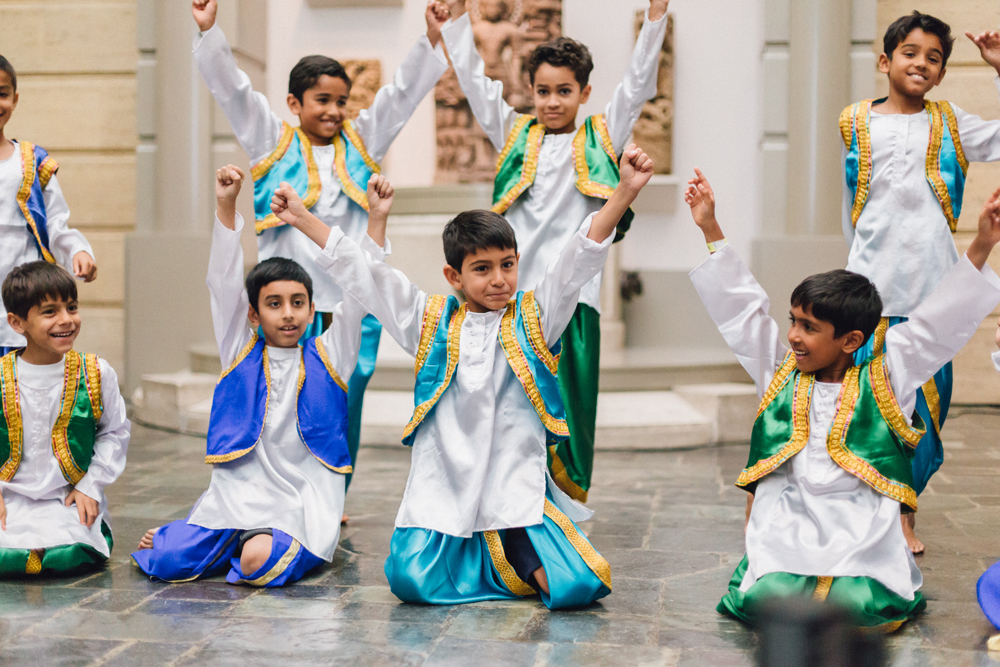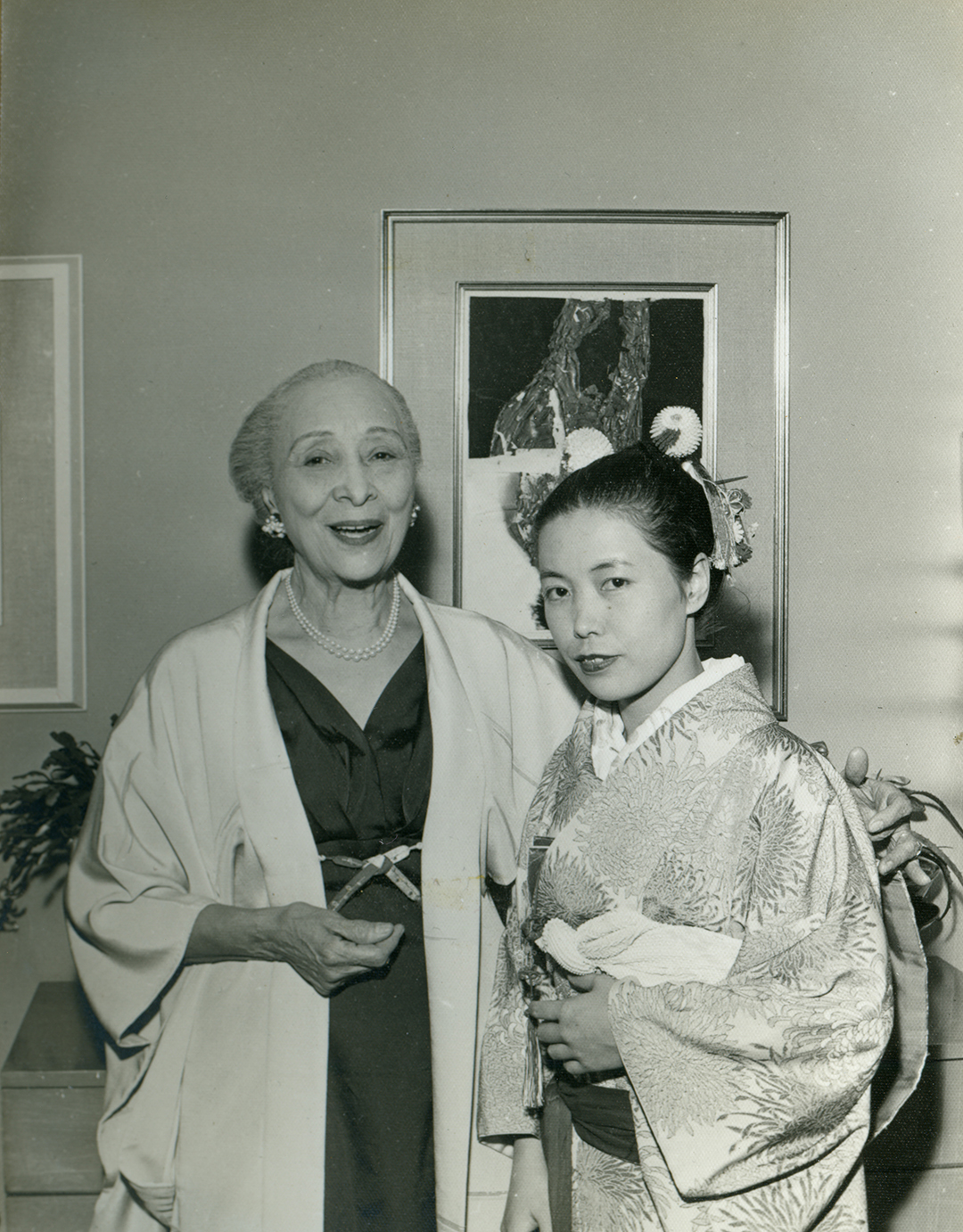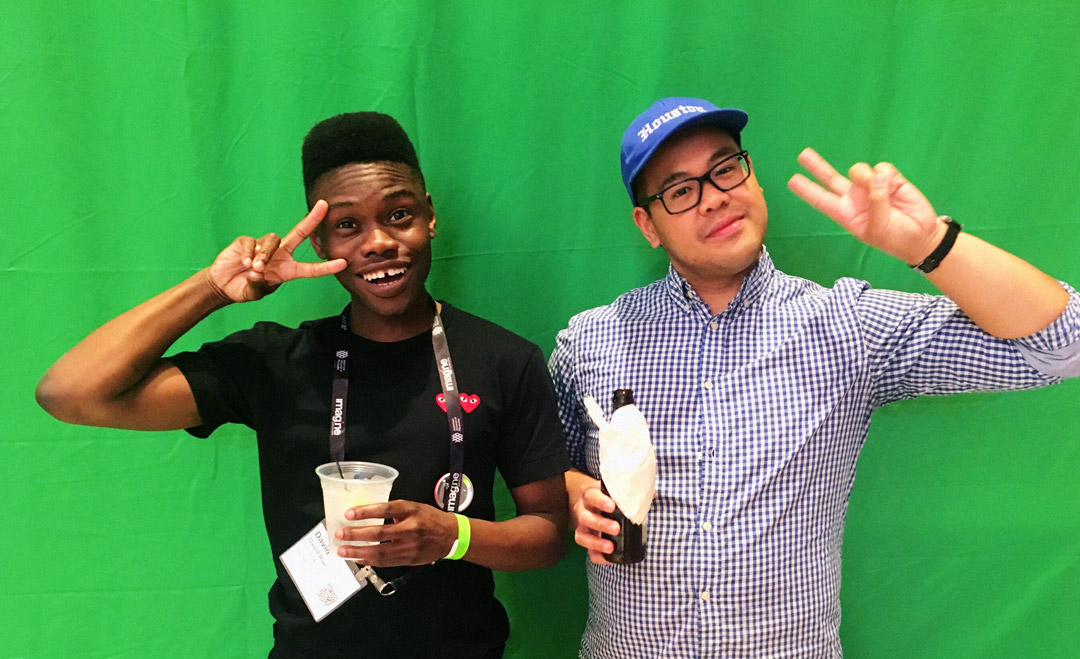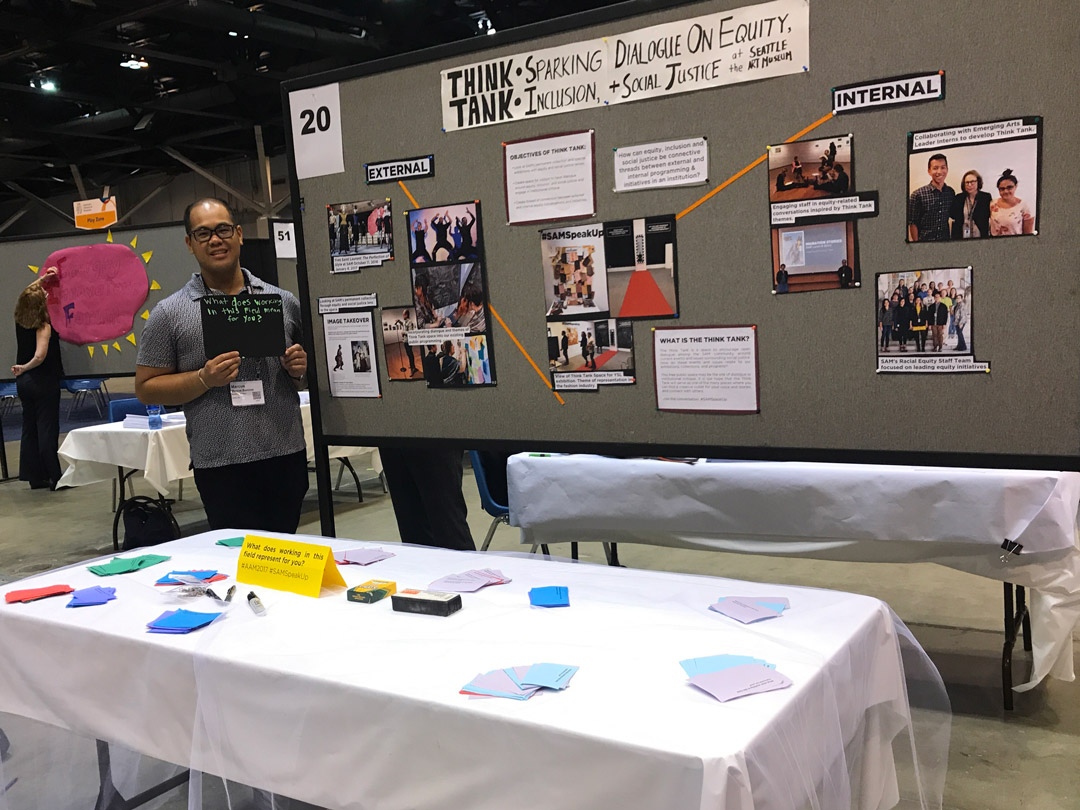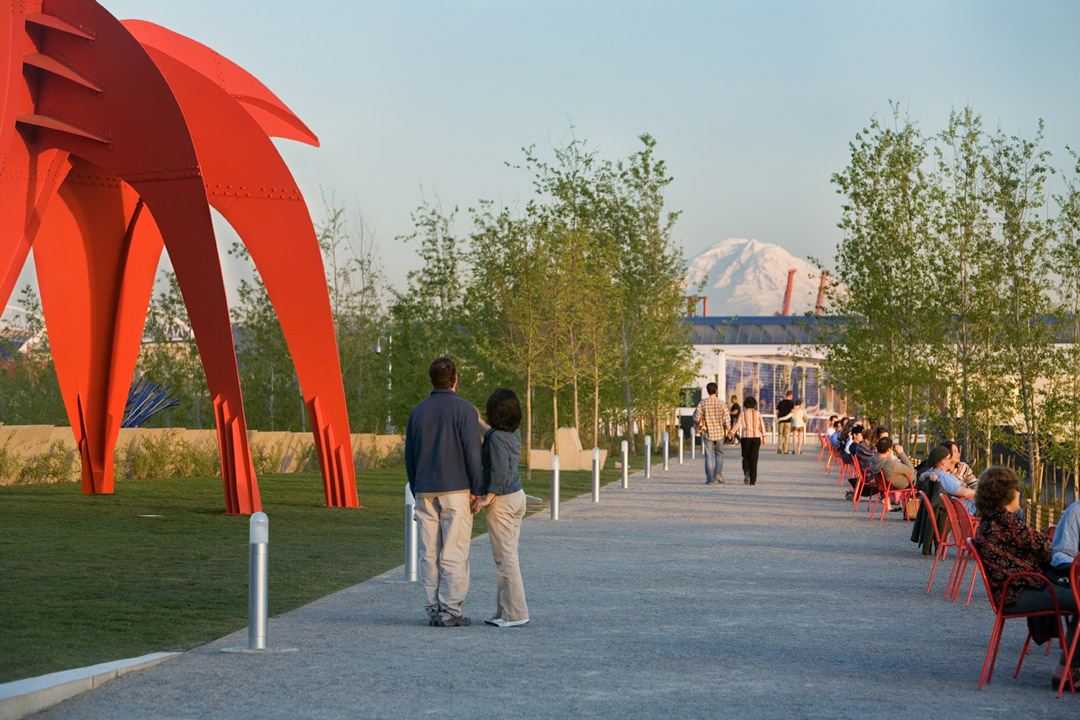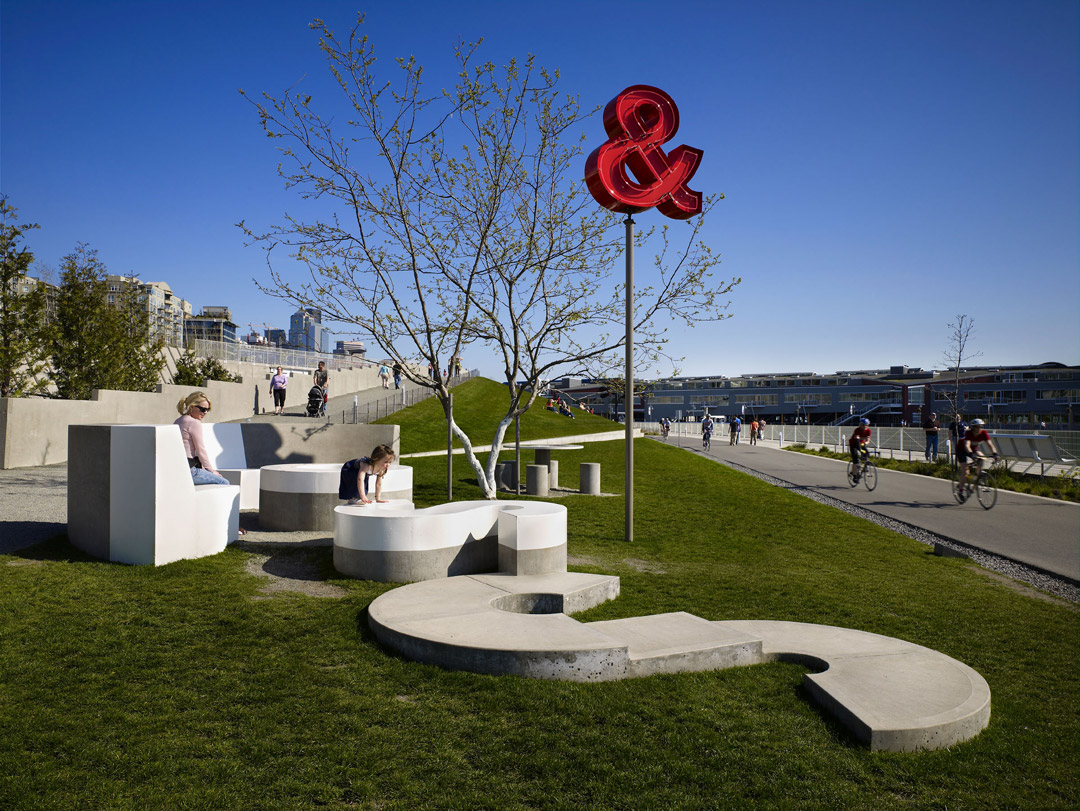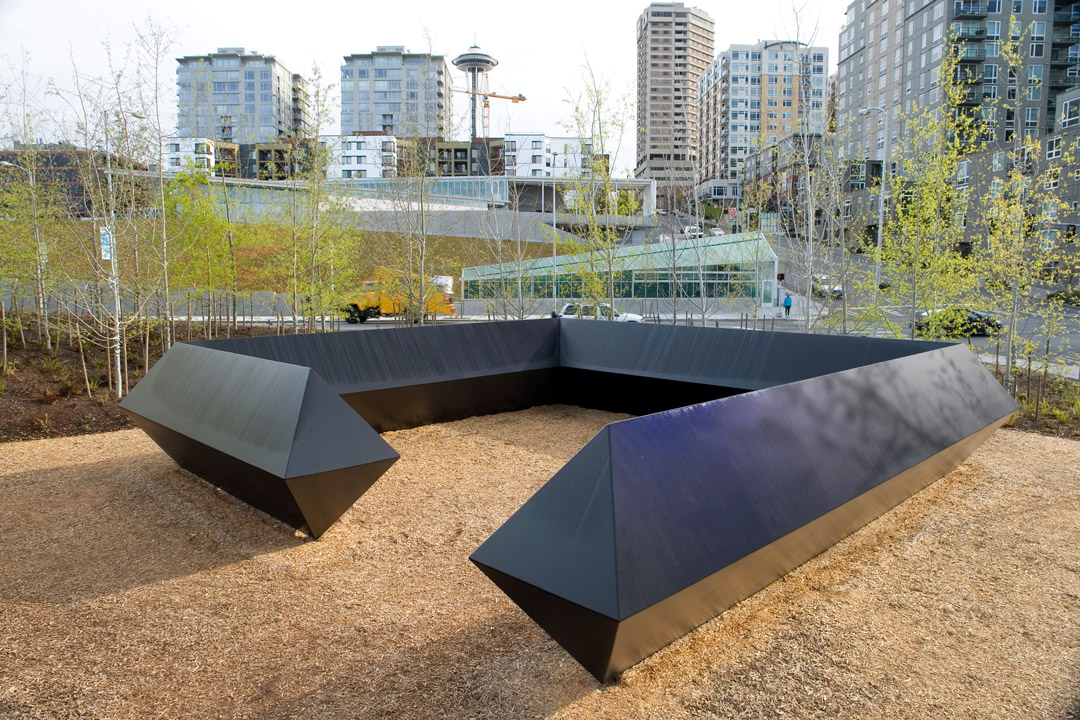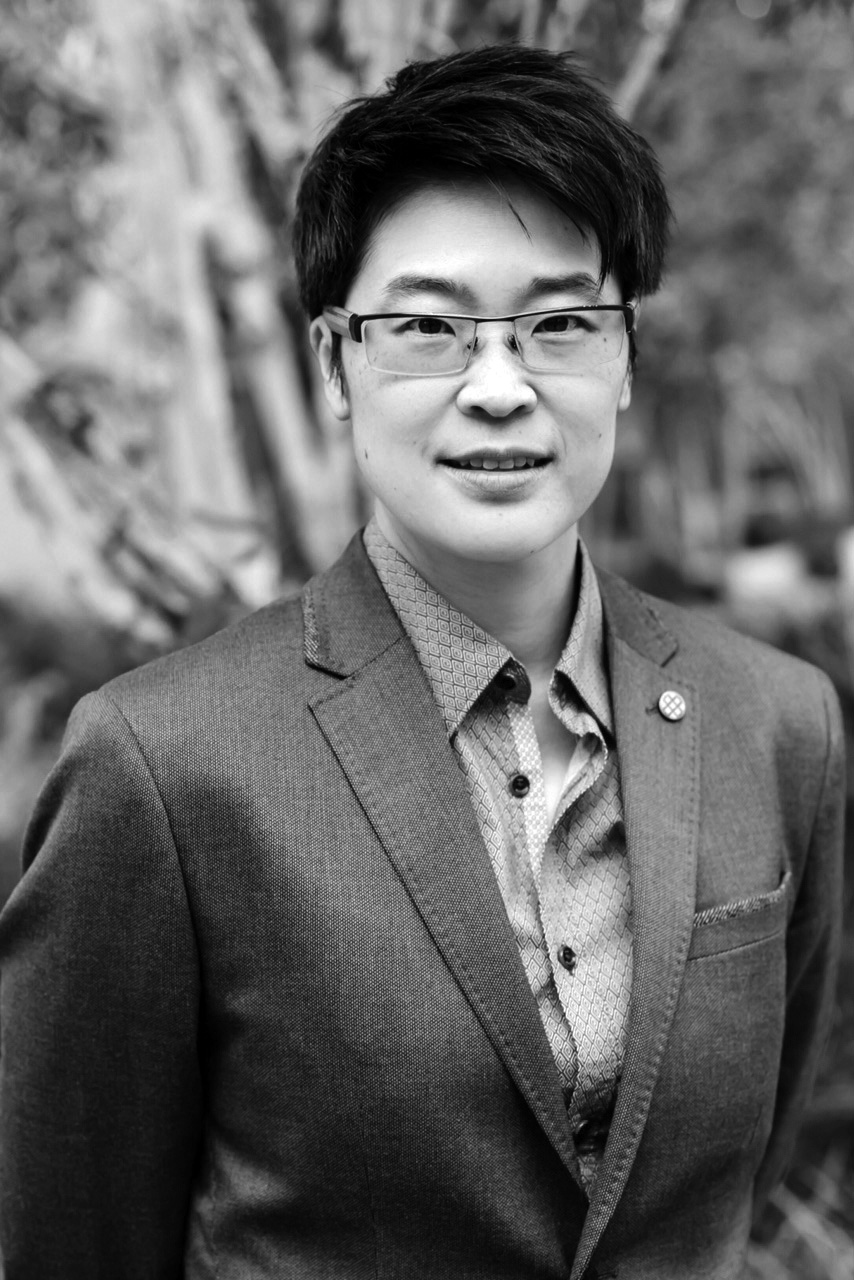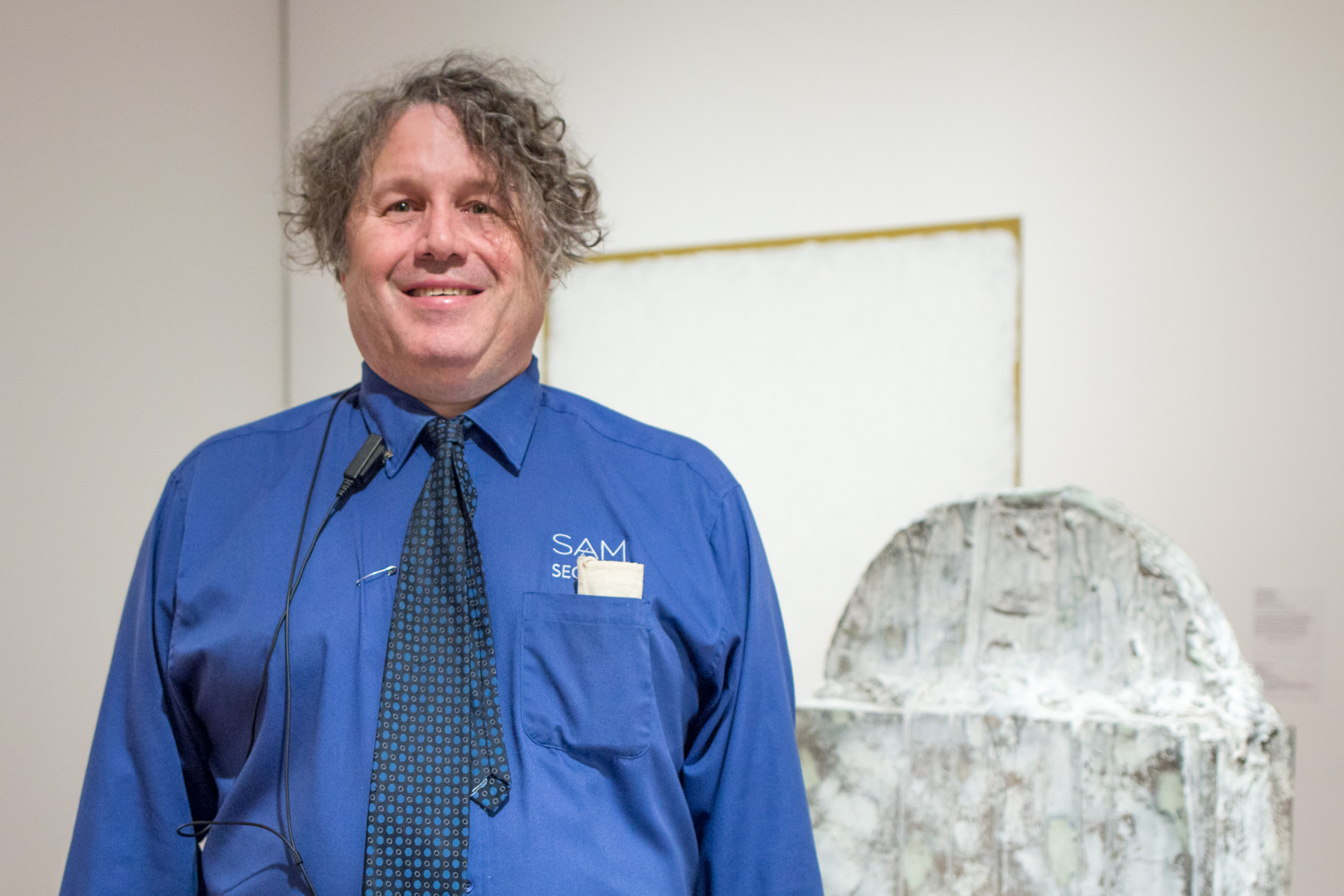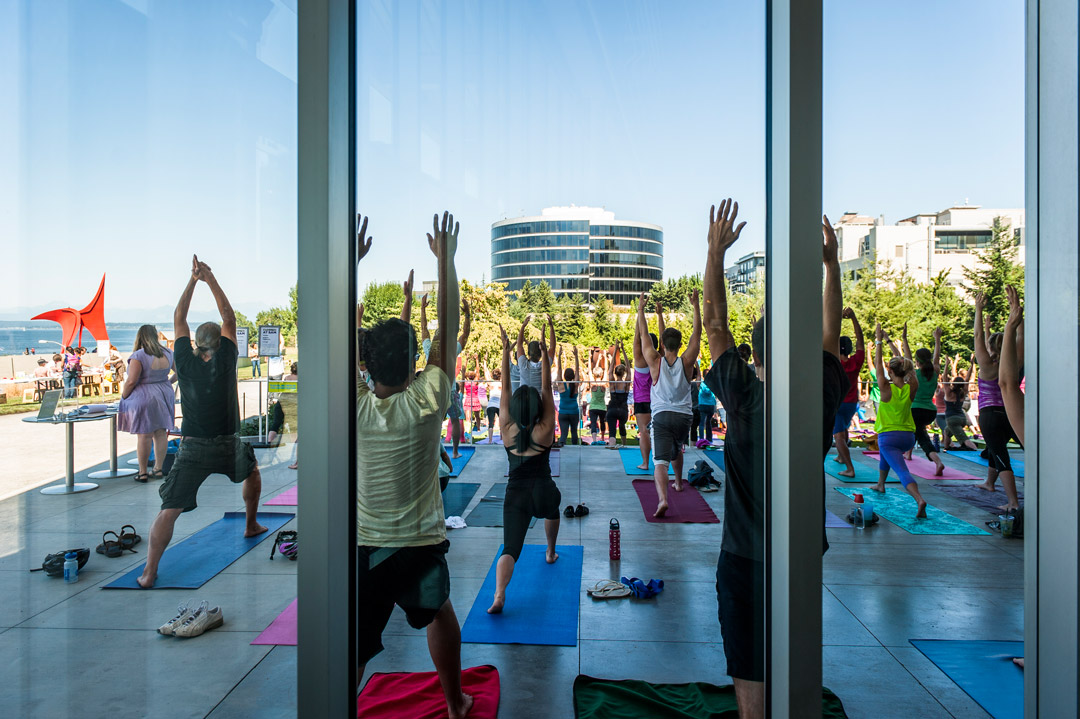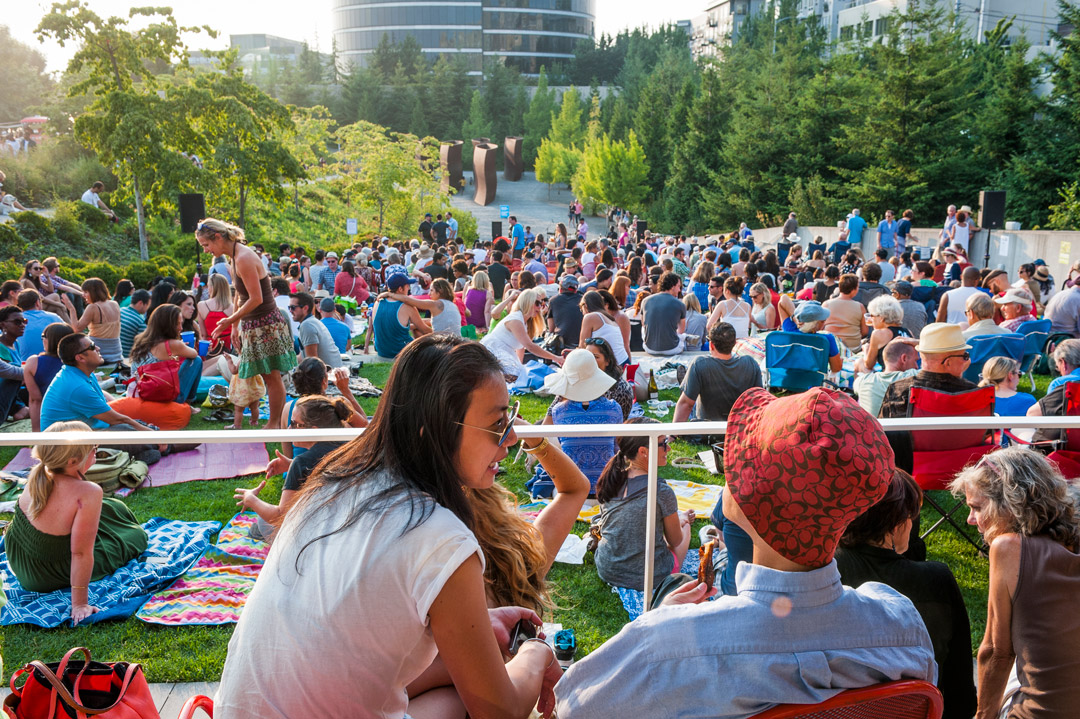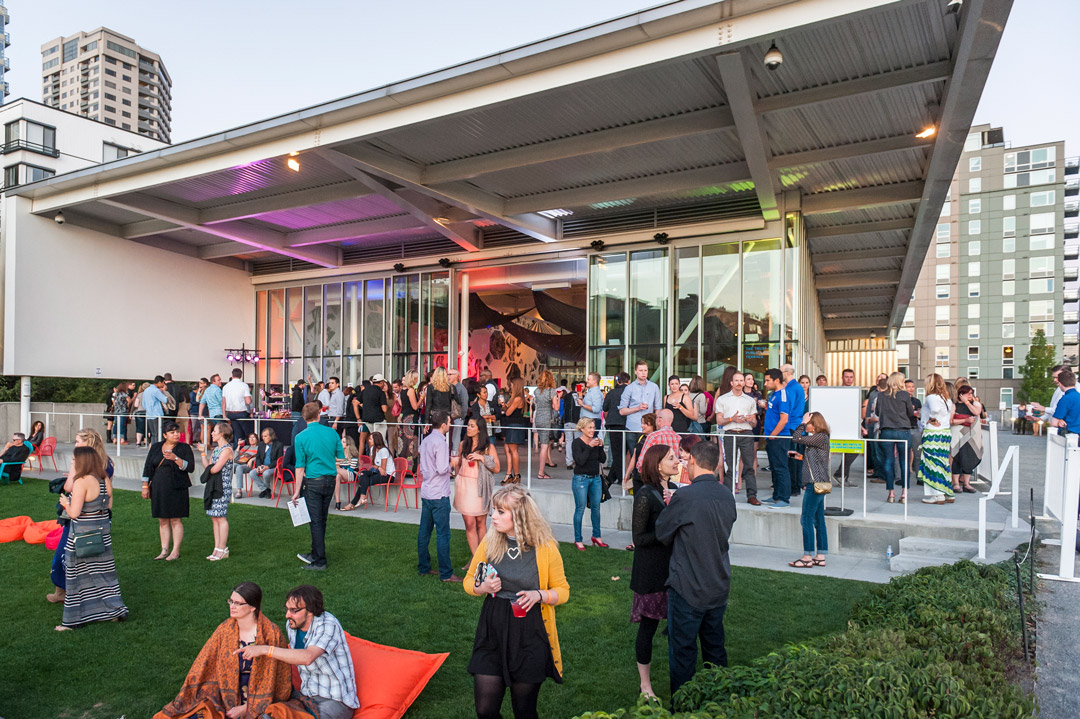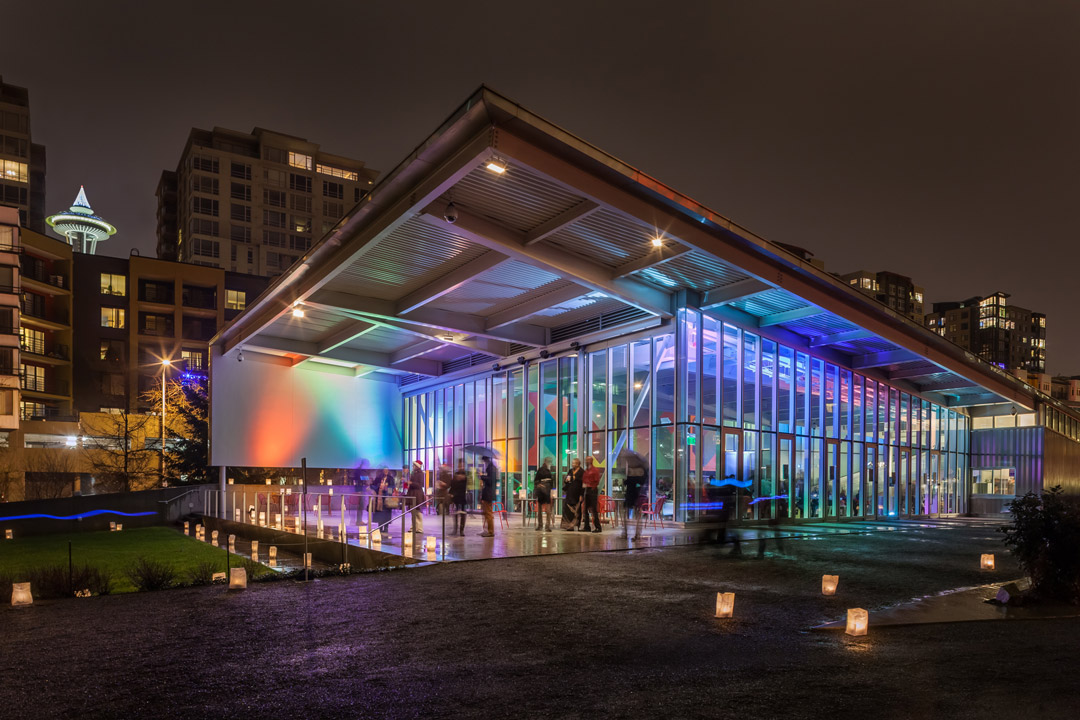Molly Vaughan, winner of the 2017 Betty Bowen Award, comes from an academic background, however the background noise of a visit to her studio is the sound of a sewing machine. Vaughan is embroidering Four Corners, a poem written by one of her collaborators, Natalie Ann Martinez onto the fabric she will use to make the sleeves for her current garment in the ongoing series, Project 42. Though she didn’t study textile art, Molly Vaughan’s recent work includes the production of colorful and carefully crafted, hand-made garments.
Project 42 is named for the short life expectancy of transgender individuals in the United States. The age 42 is based on Vaughan’s own research since no official study can currently verify the average life expectancy of trans people. The National Transgender Survey was conducted two years ago and will be published soon as the most comprehensive analysis of the transgender community, Vaughan tells us.
For each work in the series, the artist designs a garment that begins with an image of a murder location, which is digitally manipulated to create an abstract textile print. The garment is then activated by a collaborator or by the audience and visitors to the installation, as it will be when installed at SAM for Molly Vaughan: Betty Bowen Award Winner, in April 2018. Molly Vaughan describes this practice as rooted in the belief of labor as memorialization and in the physical object as tribute.
Help us celebrate the 2017 Betty Bowen Award Winner during the Award Ceremony and Reception on November 9 featuring a collaborative performance memorializing Fred Martinez Jr. by Natalie Ann Martinez, Catherine Uehara, and Amanda Pickler, and a talk by this multi-talented artist.
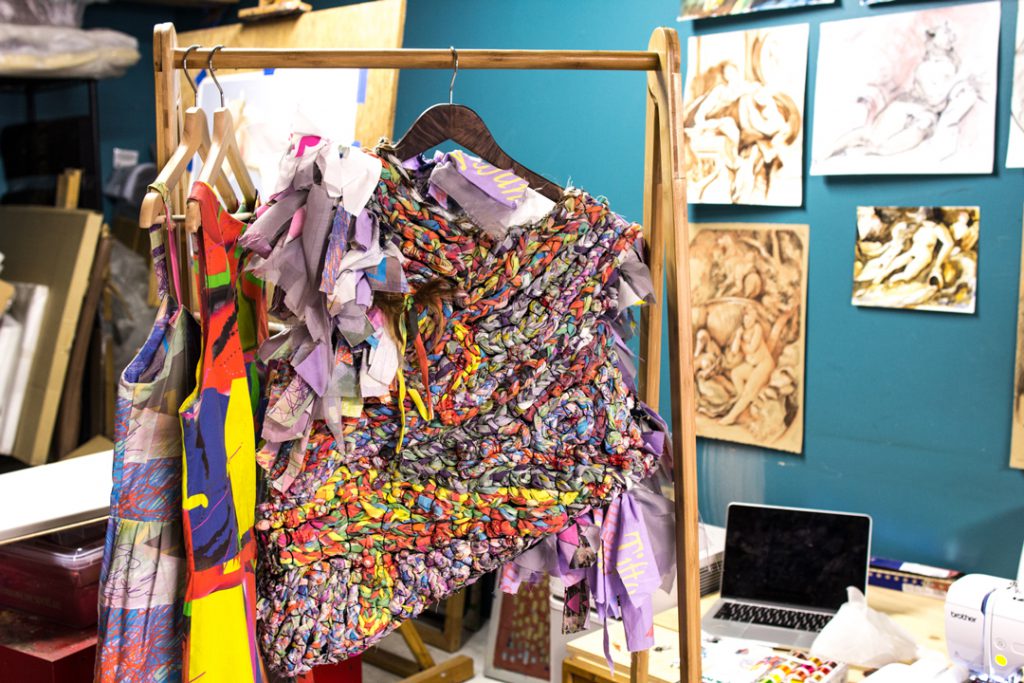
Heavier than it looks, this top includes fabric from every garment Molly Vaughan has made. This is the only piece Molly has made for herself and she intends for it to continue to grow.
SAM: Tell us how Project 42 got started.
Molly Vaughan: Project 42 began as a with a grant from Art Matters Foundation. I proposed a series of painting that were abstract paintings of locations where trans people had been murdered. Many people don’t want to have conversations about violence against trans people. Most people don’t know what abstract painting is about. They don’t know the history and the conceptual violence behind it. I wanted to use abstract painting to speak to that idea of something misunderstood, which ‘transness,’ I think, is very misunderstood.
How did you begin working with textiles?
The paintings were too static. They weren’t memorializing the individual in the way that I wanted them too. For a long time, I’d been talking to a dancer about collaborating, and I reached out to her to ask if I printed this pattern on fabric and made a garment, would she dance in it? That’s where it began. I stepped outside of my boundaries to make something outside of my traditional production and comfort zone.
How did do you decide how to abstract these geographical locations? Is there a specific school of abstraction or artists you’re influenced by as you create the patterns?
It’s responsive. Sometimes the patterns start with colors from photographs like skin tones or colors of clothing. Sometimes the patterns utilize screenshots of Google Earth street views where someone was murdered. They each include some type of symbolic action. In one garment many layers of lines are combined to form the pattern, each with 105 lines, a reference to the room number the individual was murdered in. There is also the design content—creating something that is visually appealing as a way to pull people into a discussion that they don’t recognize they want to have.
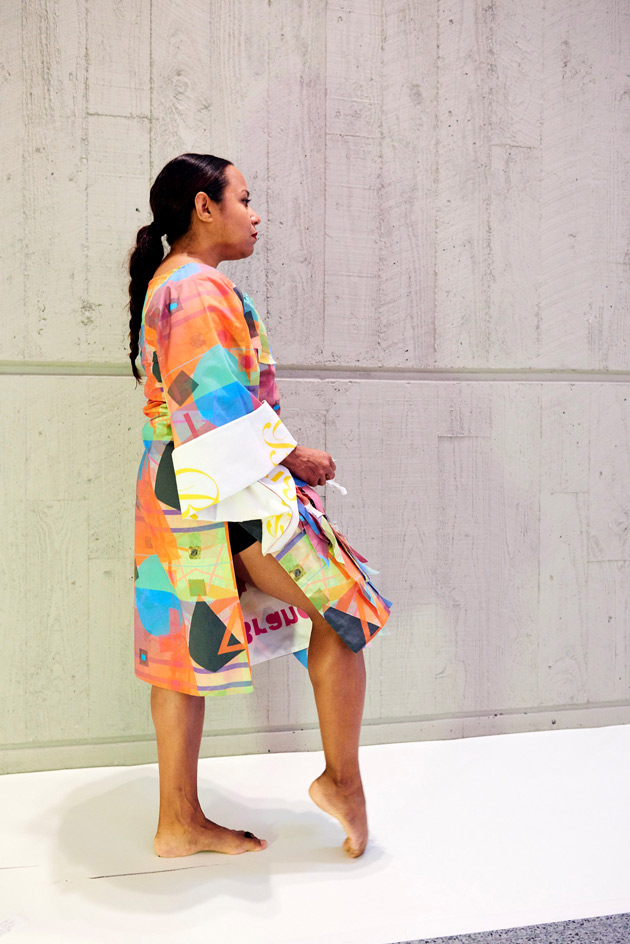
What role do your collaborators play in the creation of the garment?
I think of myself as the director of the project. The collaborators can engage in any type of action that they wish to share but we work closely to make sure that their memorialization is respectful and considered. Sometimes I do performance work too but I try not to be the focus. The last one was the result of a requirement by Anna Conner that couldn’t be facilitated unless the dress was cut off of her. Then I began to recognize the symbolic significance of sewing the dress back together as part of the performance. So that’s what we did.
The activations of these garments have taken place across multiple continents. Are these connected to the murder locations or otherwise location specific?
One of the original goals of the project was to offer stolen opportunities to the spirits of the people who were murdered. And an original conceptual element was the idea of travel. The first garment I made went to Ho Chi Minh City in Vietnam to be performed in by Emily Navara who wore the dress to her favorite park in the city. The second dress was sent to New York City and my friend Mia D’Avanza went to her favorite swing dancing club wearing it after sharing a large meal with her friends.
As a white artist, it would be inappropriate for me to dictate how the majority of these people are memorialized because the majority of these people are people of color. Though one part of my identity represents a shared experience, my experiences are so different than many of these individuals because of the intersectionality of their identities. This is more about the retuning of humanity and the sharing of missed opportunities. Eating at a cafe in Rome in one of these garments is a symbolic gesture, but is a symbolic gesture focused on the humanity of individuals who were treated so inhumanely.
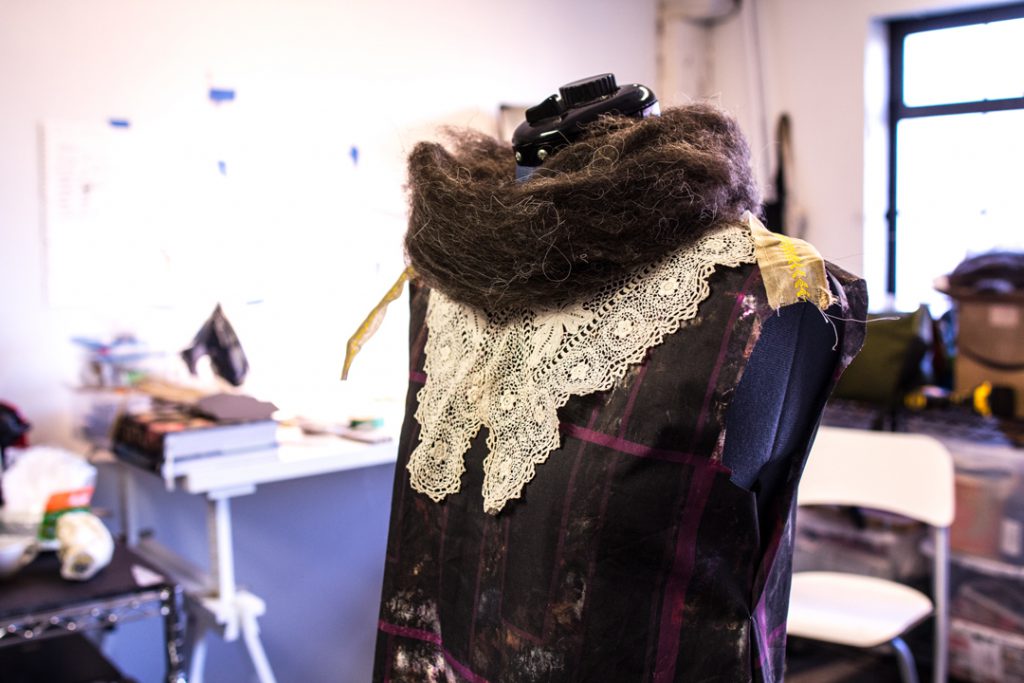
Work in progress for collaboration with Natalie Ann Martinez. Inkjet printed cotton poplin, antique lace, Navajo Churro sheep wool.
Will the installation at SAM in April include performance?
The installation at SAM will include three or four new pieces. They will be more sculptural since they will be on display for such a long period. The center piece will be a collaborative sculpture that visitors can contribute to by tying or manipulating fabric that has been prepared for them that will then be either sewn on to the garment by me or may actually be tied onto the garment by the museum goers themselves.
I’m pretty emotionally overwhelmed by the idea that to create these new pieces since the process requires me to immerse myself in the murders. I select who to memorialize by looking at the photographs of the individuals, and allowing them to step forward and ask, to speak to me. You have to get into a certain space to do that.
How much research do you do about these people’s lives or is it just the incident of their murder?
The amount of available information is dictated by the size of a person’s community. I want to treat everybody the same, so I decided not reach into, or out to, the communities the people were directly from. In some ways that sounds a little wrong, and in some ways, it is. But some of these individuals were prominent and well-known, and others nobody knew. I want to make sure everybody is treated with the same level of compassion, care, and respect no matter who they were.
Fred Martinez Jr., who we’re memorializing at the Betty Bowen Awards Ceremony and Reception, has had a documentary made about him (all research points to Fred’s use of male pronouns). How do I give the same amount of attention and respect to every individual? There’s also the question of me, as a stranger, impacting family and friends by revisiting the murder of their loved ones. This is not an easy project. And at times the critiques I place upon myself of how the project functions almost stops the process, but then another murder occurs, and I question how can I help to stop this violence. Raising awareness is important but so is considering the roles that we may all play in the larger questions of institutionalized violence, particularly against people of color.
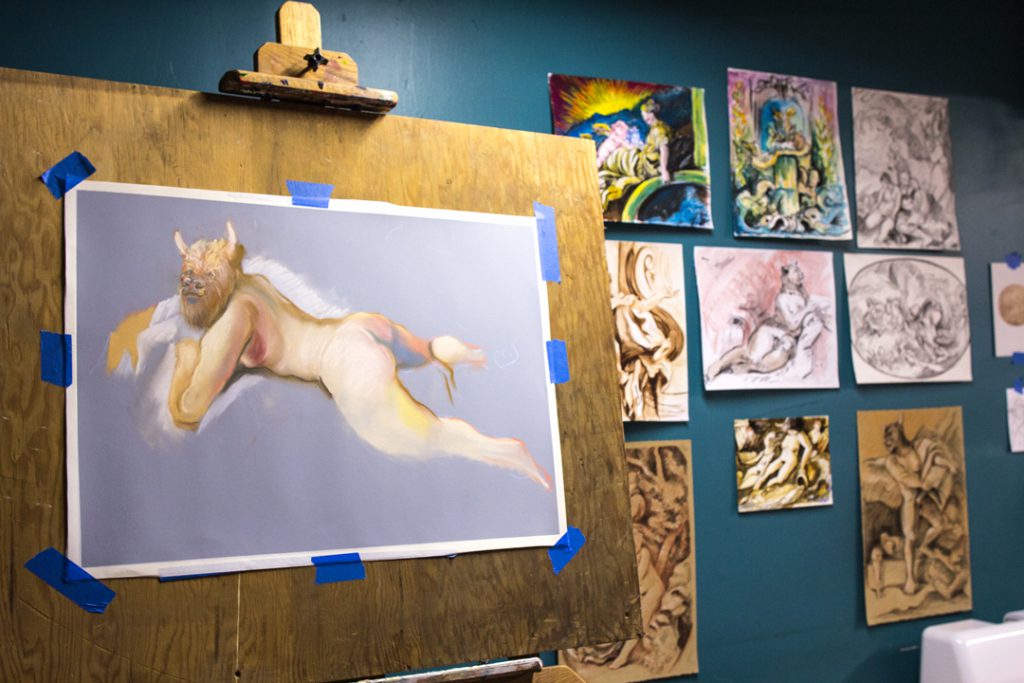
Work in progress from a series re-creating every drawing in “The Drawings of Francois Boucher” by Alastair Lang.
What else are you working on?
I just wrapped up Safety in Numbers for Disjecta in Portland. It’s focused on anonymity and its relationship to safety for myself as a trans person. I create anonymity for myself by turning people into clones of me through physical haircuts. I’ve done this twice now and in both cases, the haircut selected was based on a contemporary trend. This time it was the tasseled bob. The bob, in a historical context addresses notions of gender identity and freedom of gender cultural constructs.
In addition to that I’m working on a series of drawings and etchings. I’m re-creating every drawing in The Drawings of Francois Boucher by Alastair Lang and inserting trans bodies as a way to create a visual history for myself, which doesn’t exist. We know that trans people did exist, and in some cases, had very prominent roles in courts. I’m creating this history for myself through these drawings and they also include anamorphic creatures that I’ve been using for a number of years that hint to the disorientation that I had growing up about my identity.
– Chelsea Werner-Jatzke, Content Strategist & Social Media Manager
Images: Courtesy of the artist. Studio photos: Natali Wiseman. Molly Vaughan, Documentation of Project 42 performance by Anna Conner at the Henry Art Gallery, 2016, Commissioned by the Henry Art Gallery, Seattle, Washington, Photograph by Jonathan Vanderweit, Courtesy of the artist, © Molly Vaughan.
